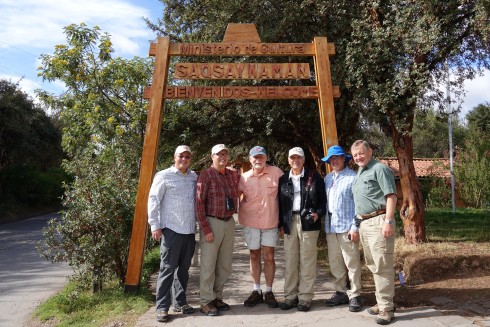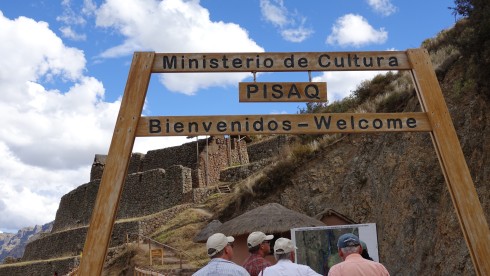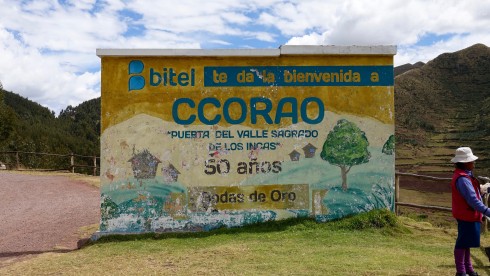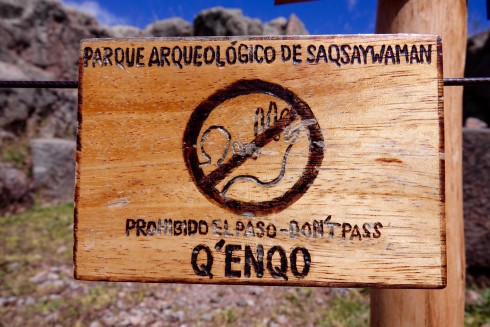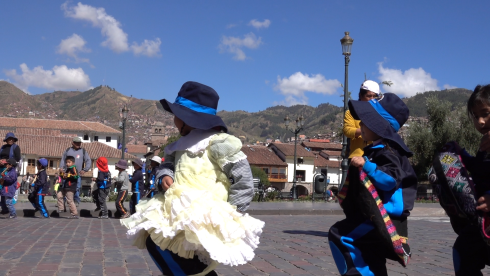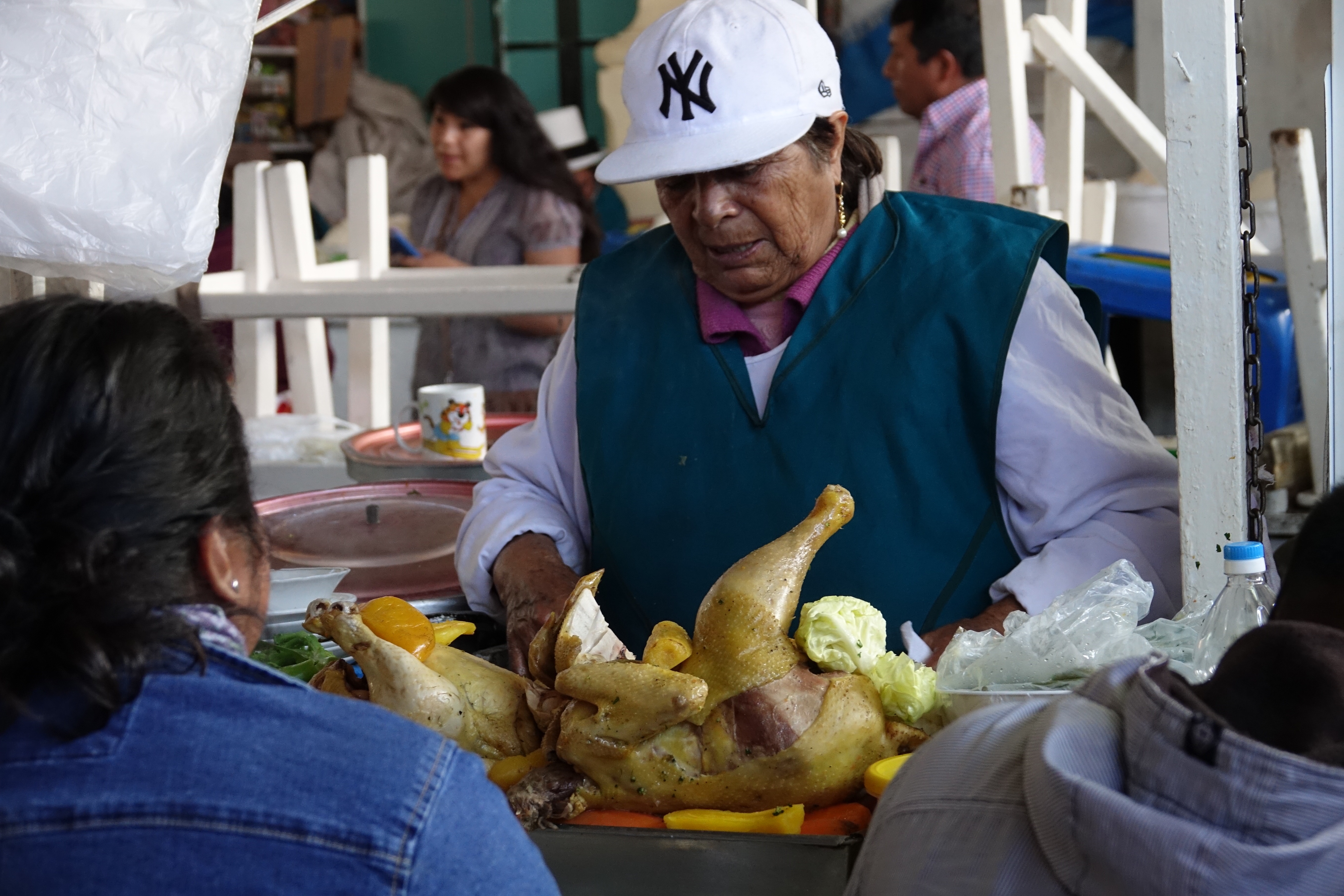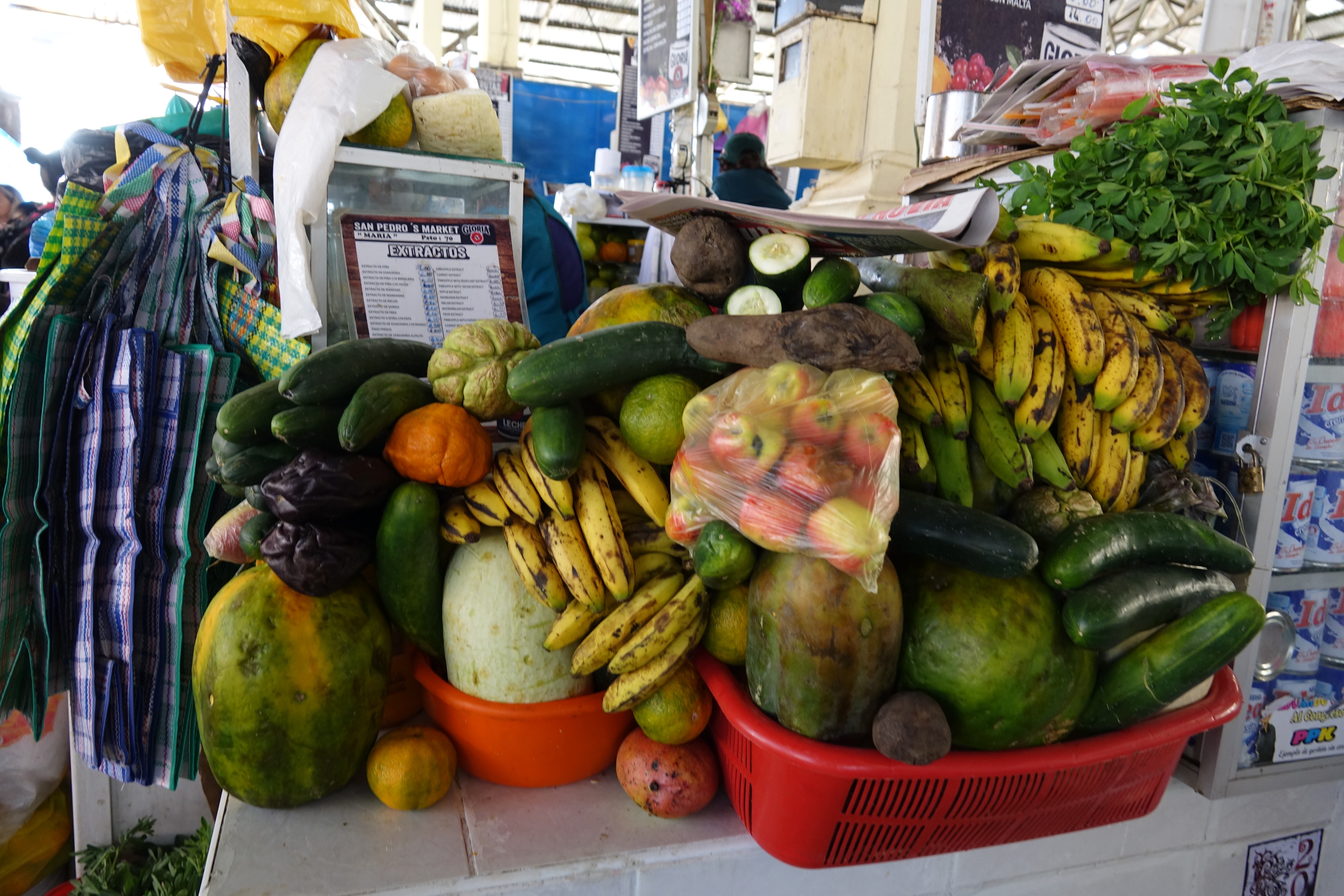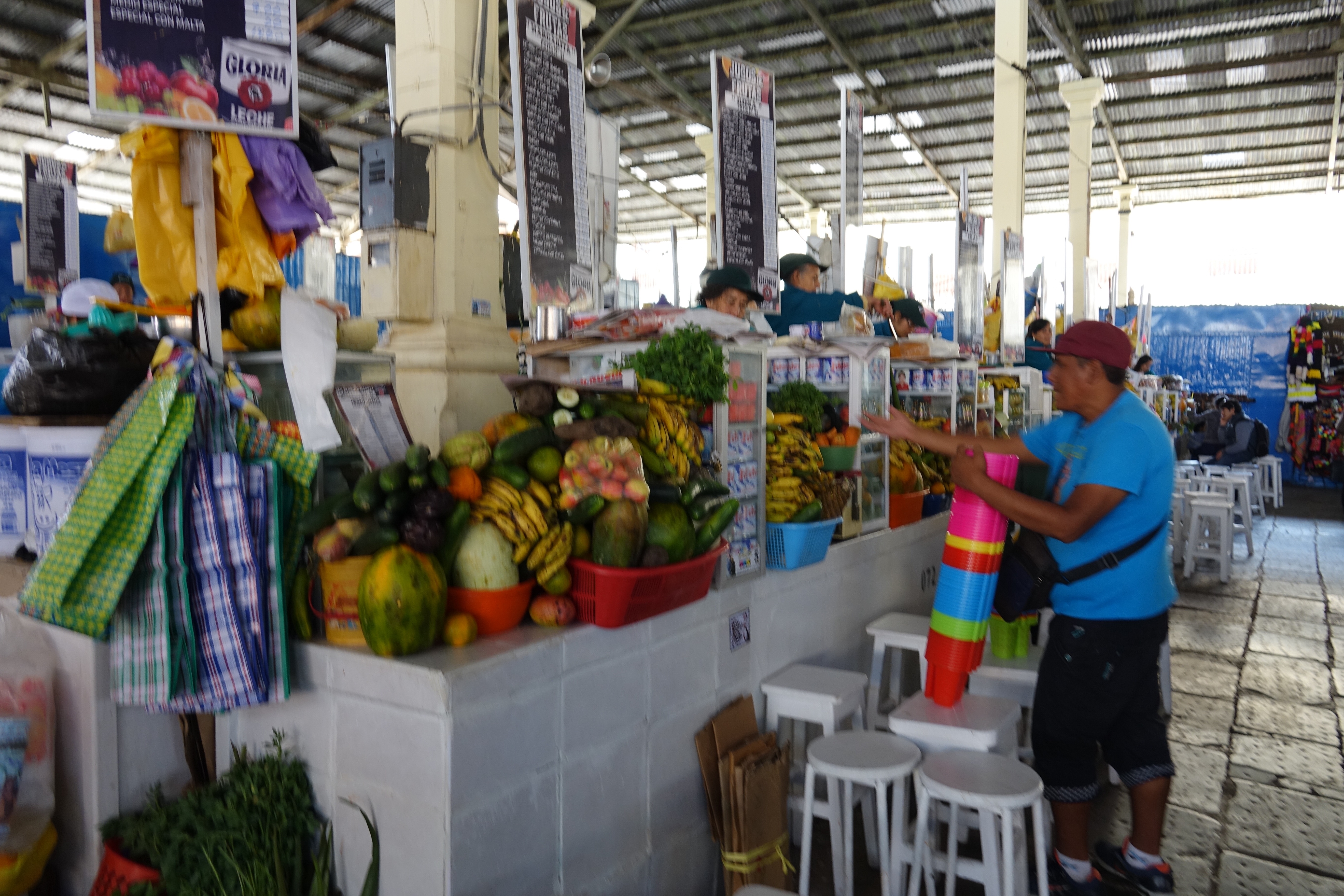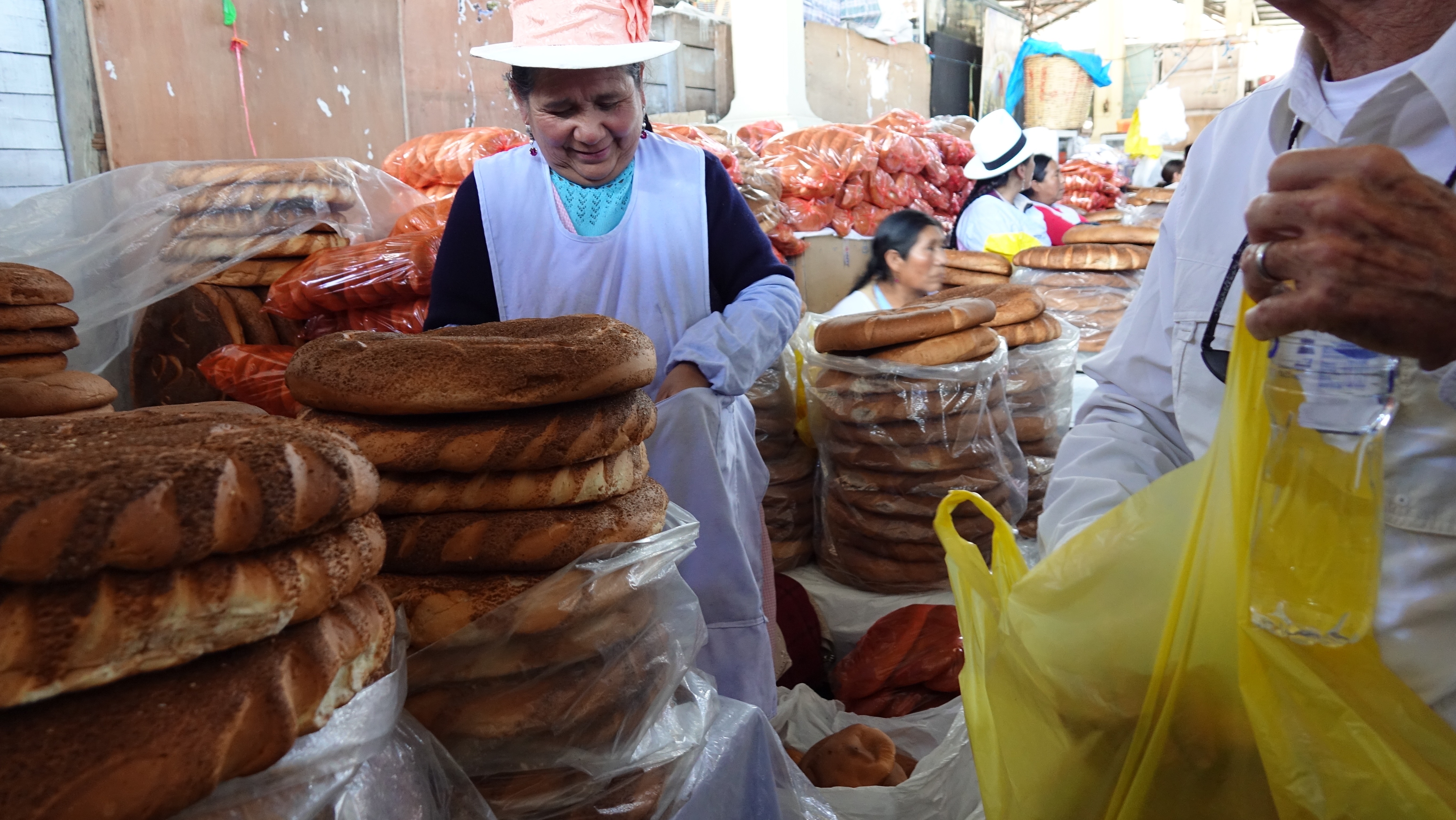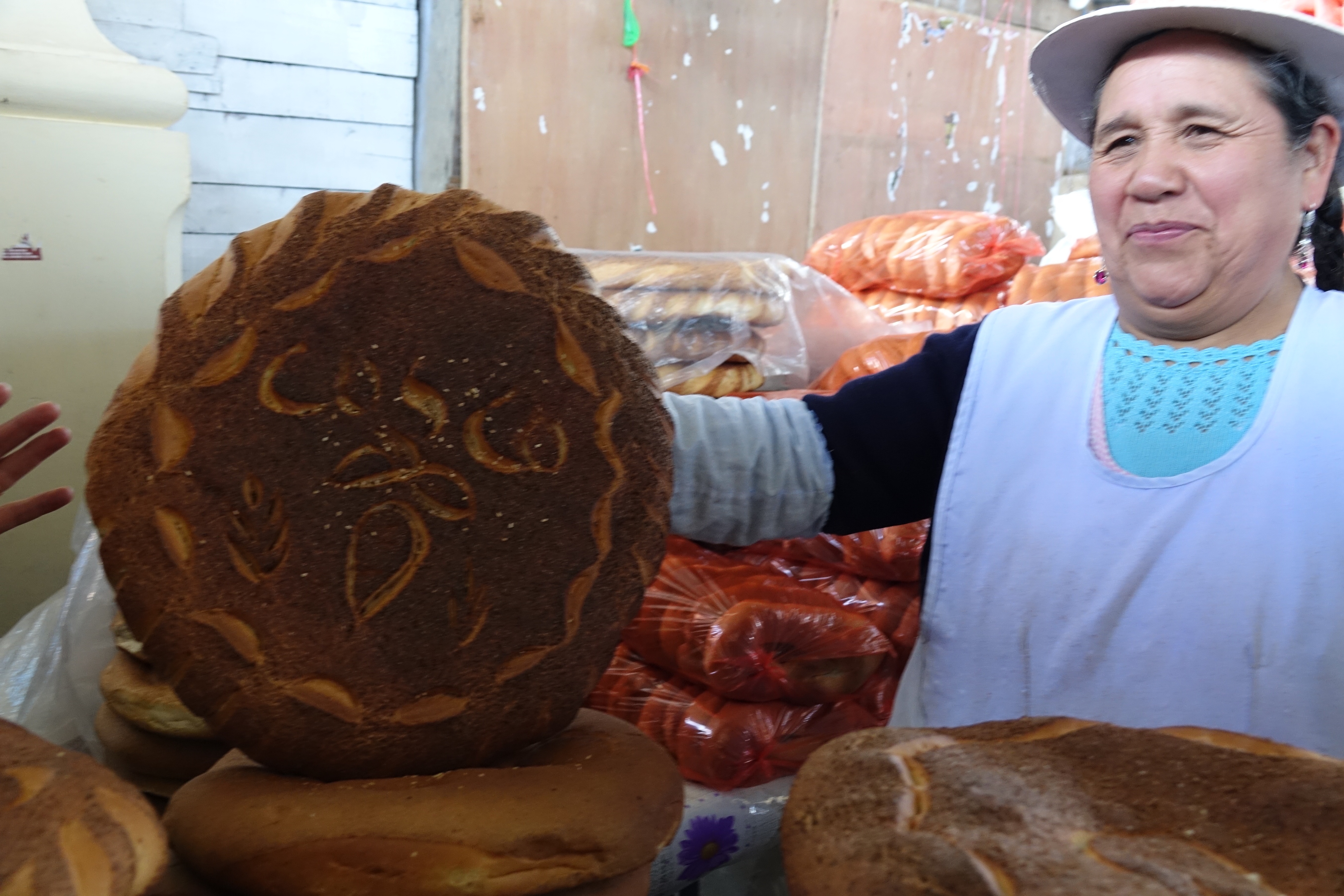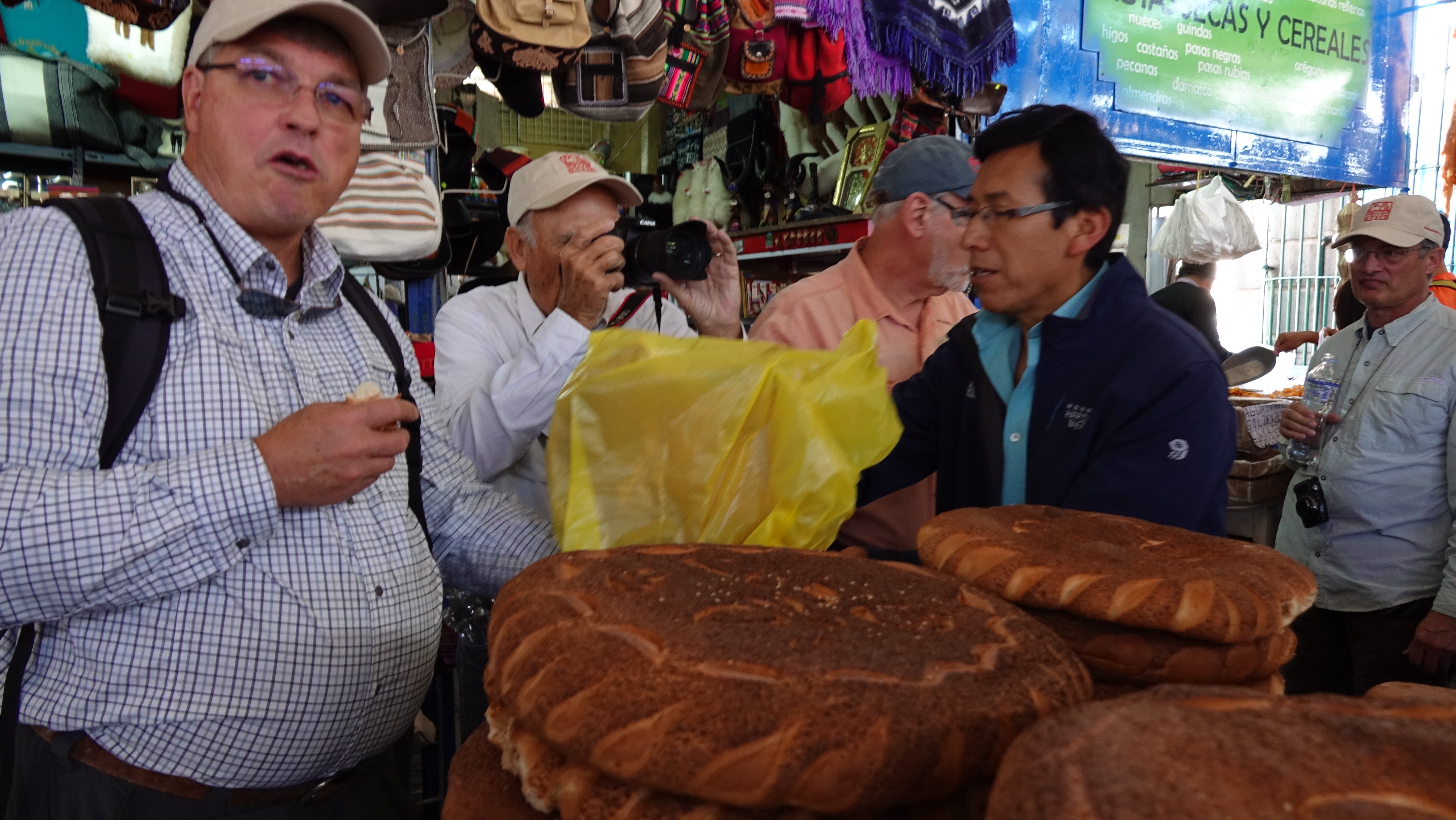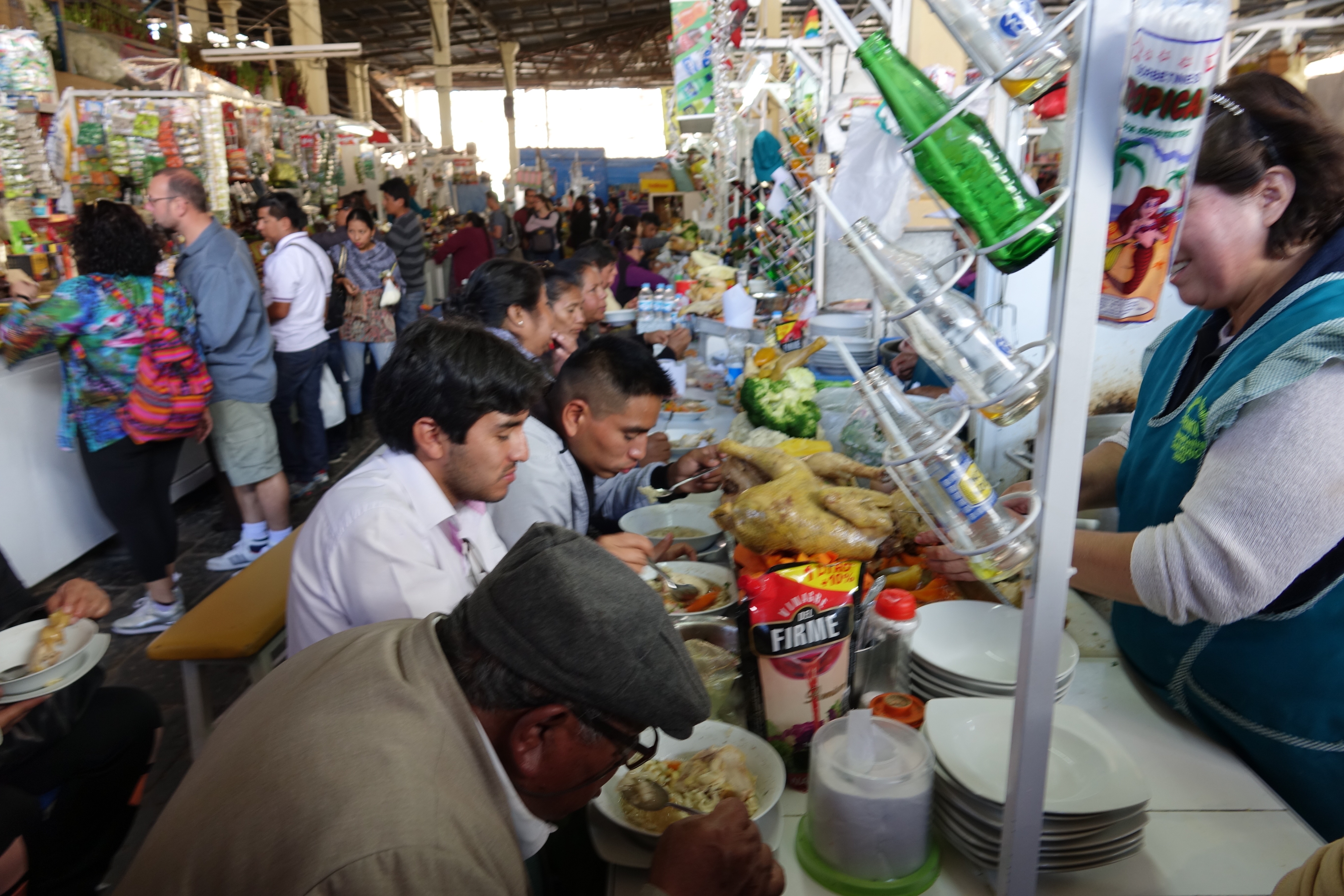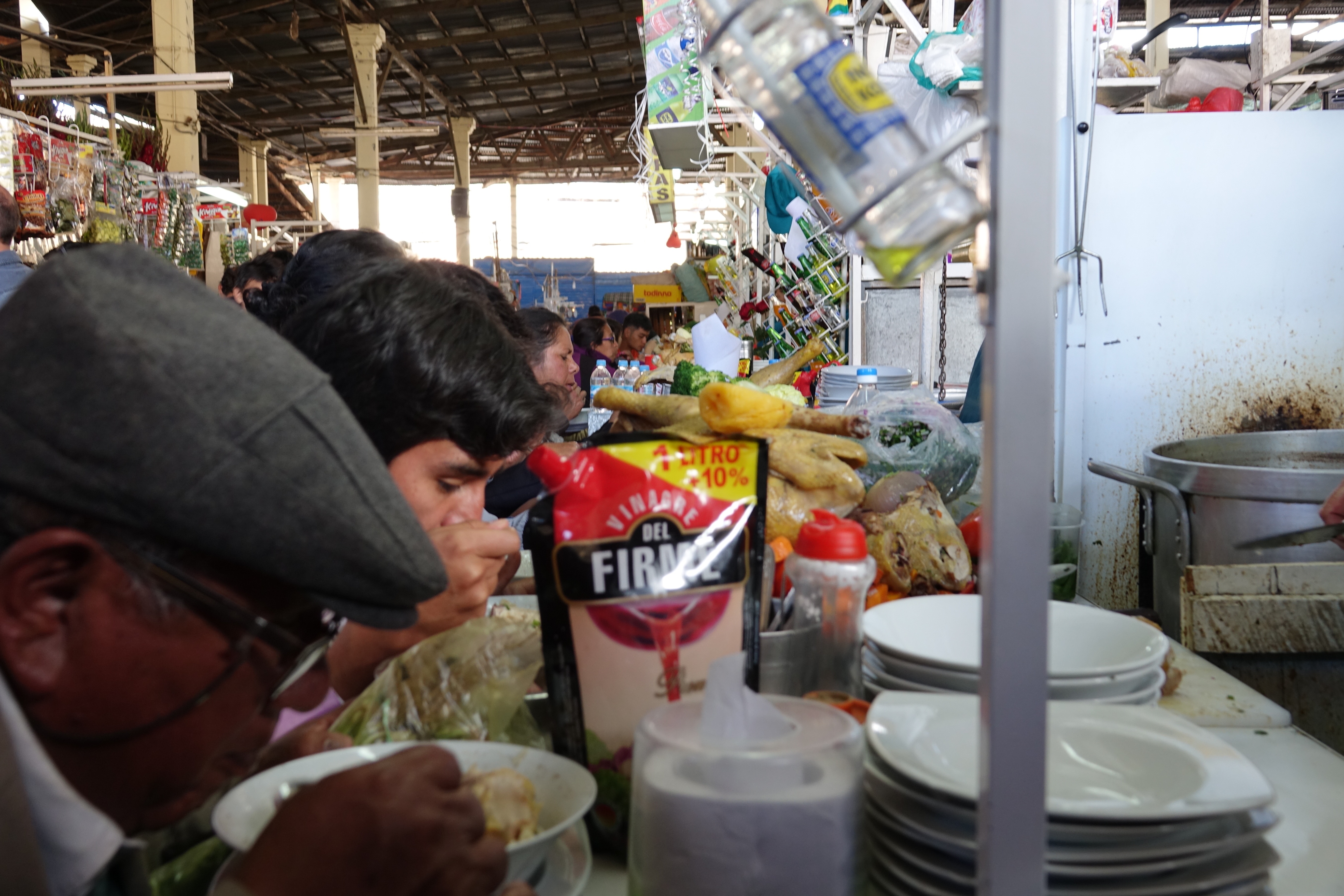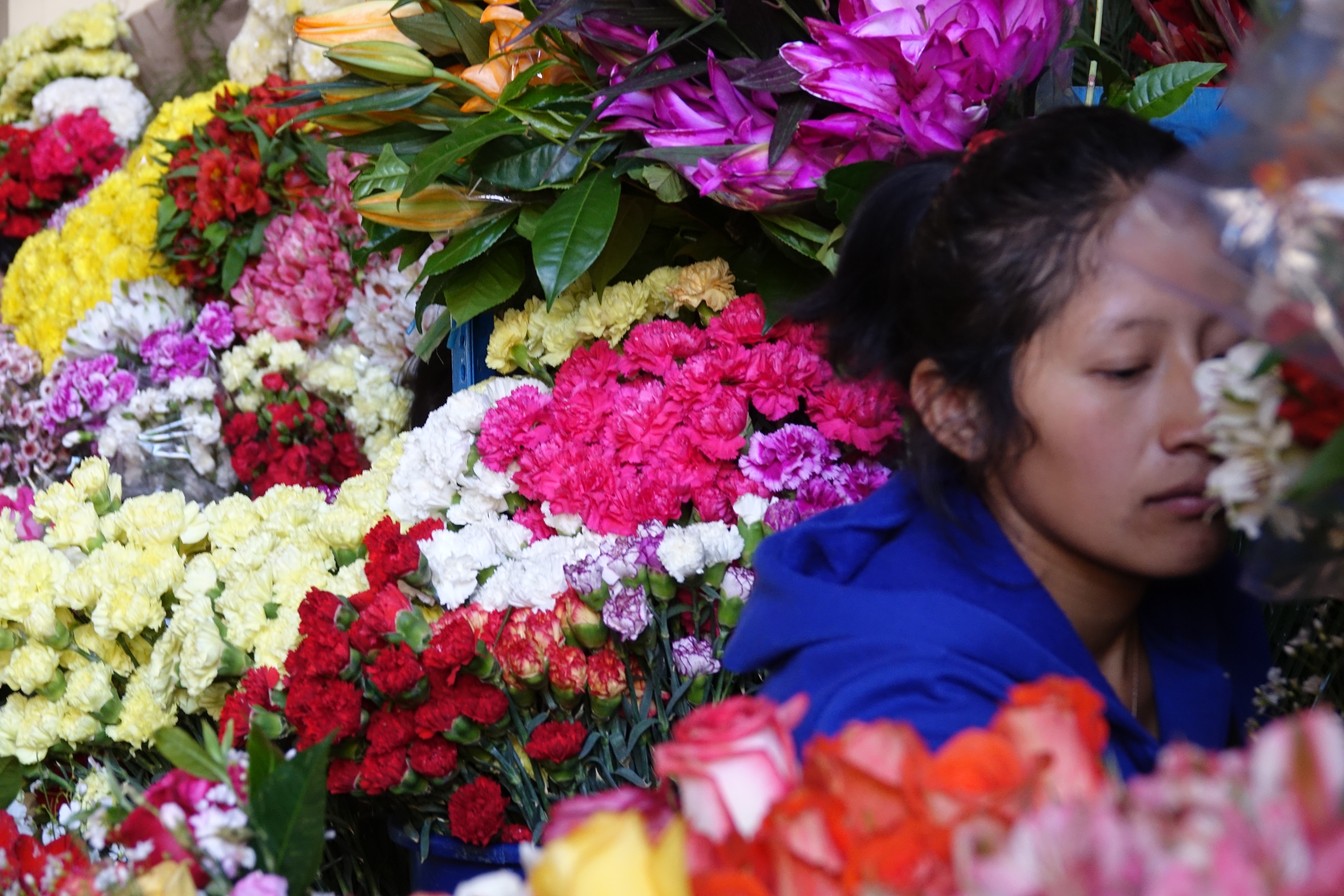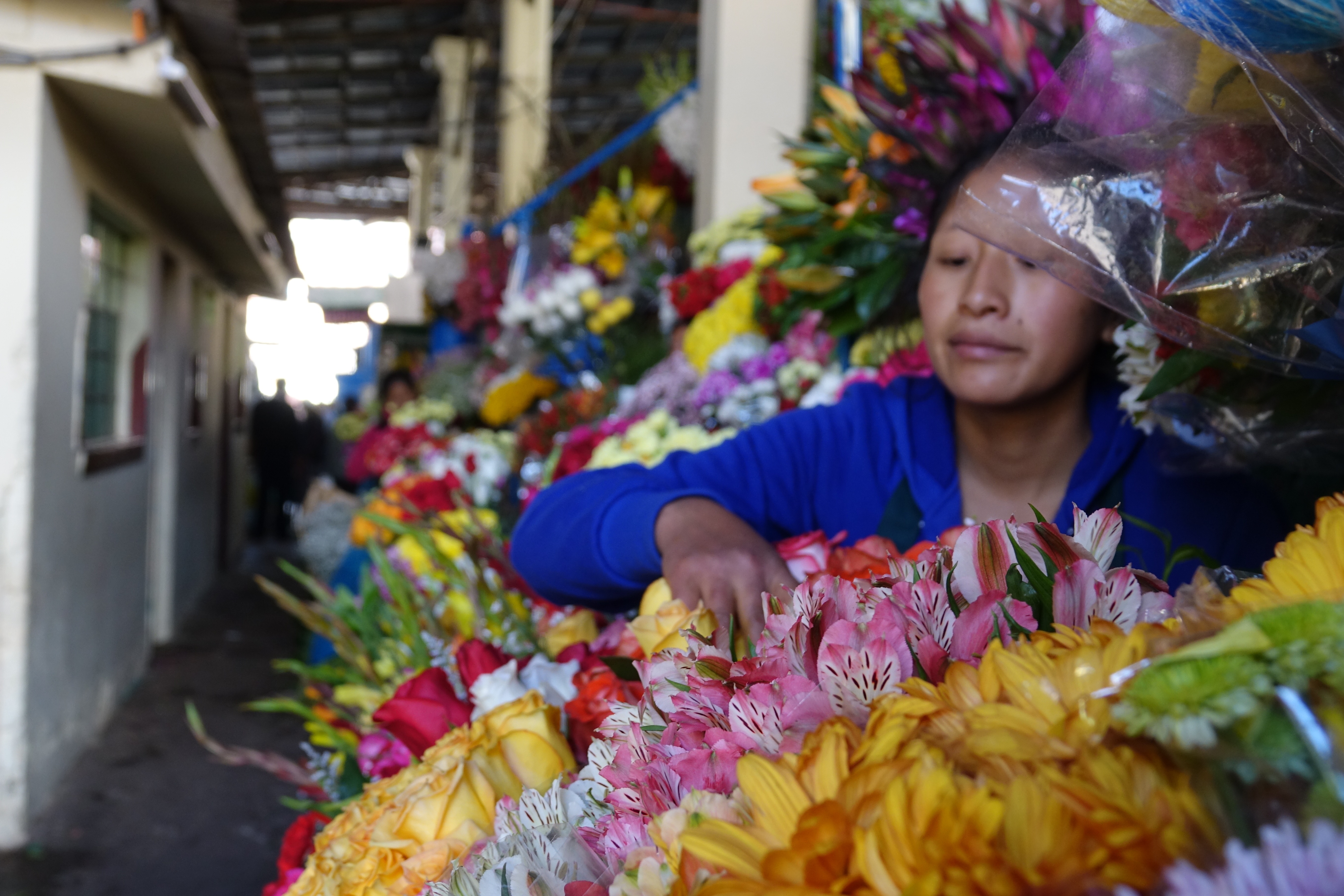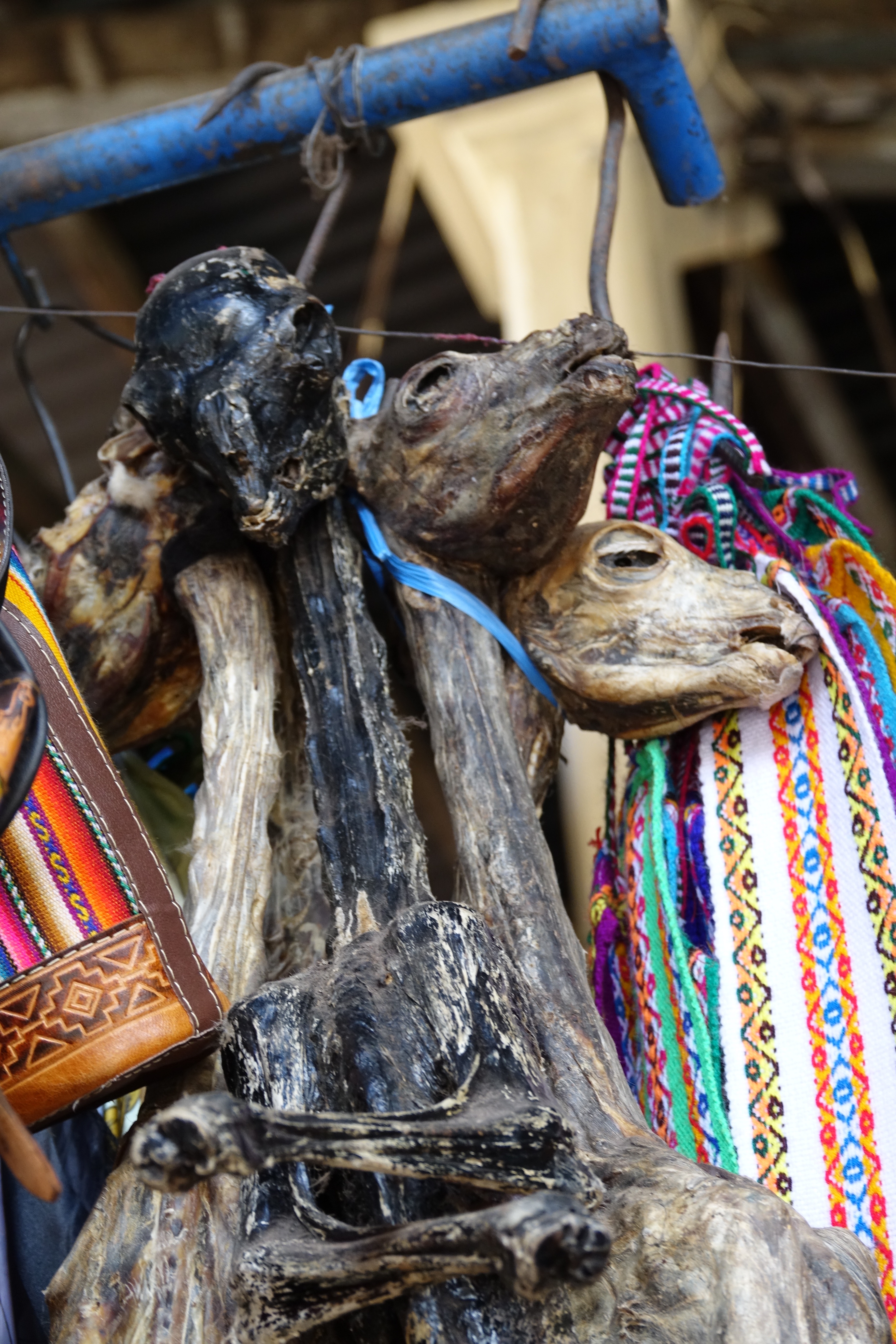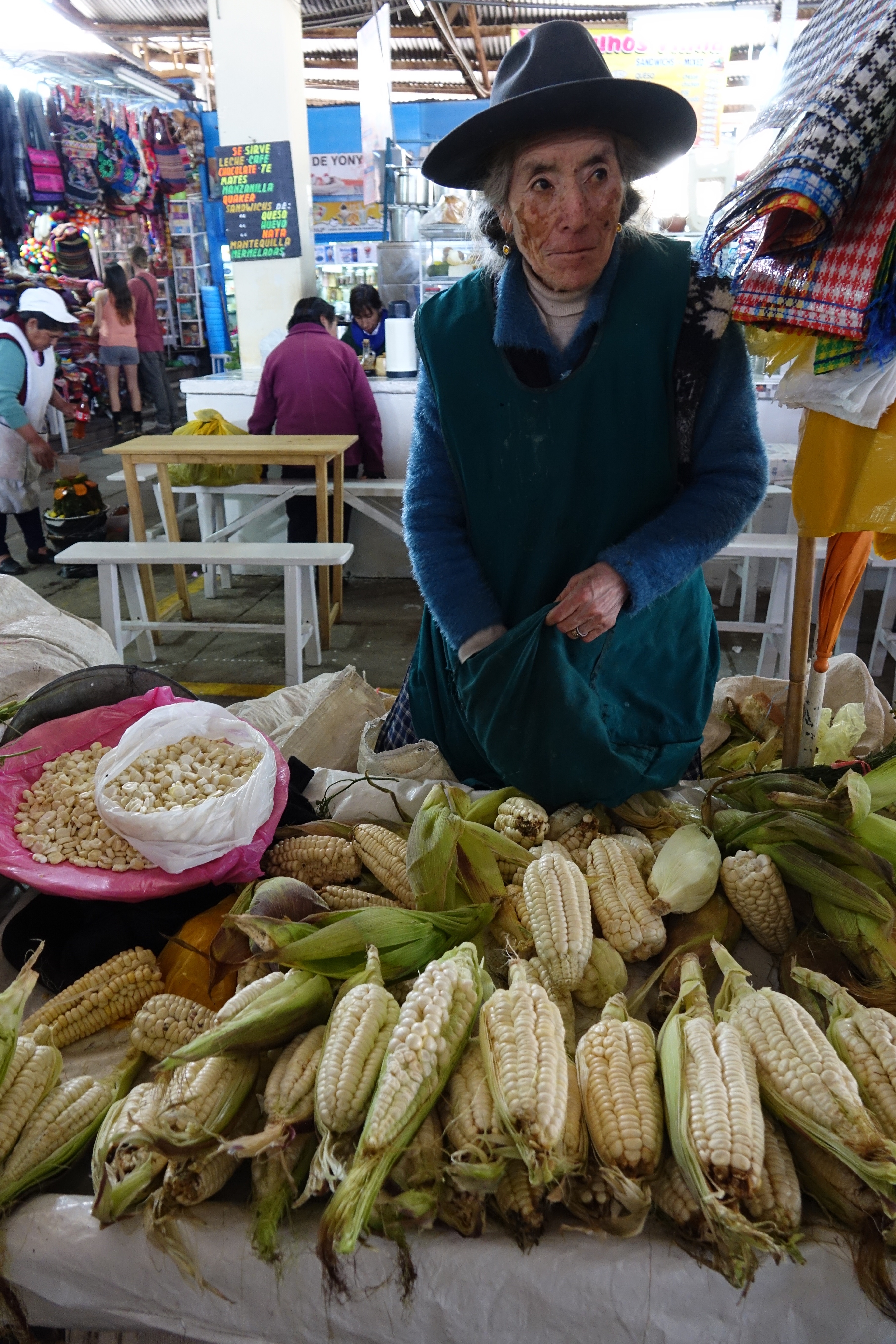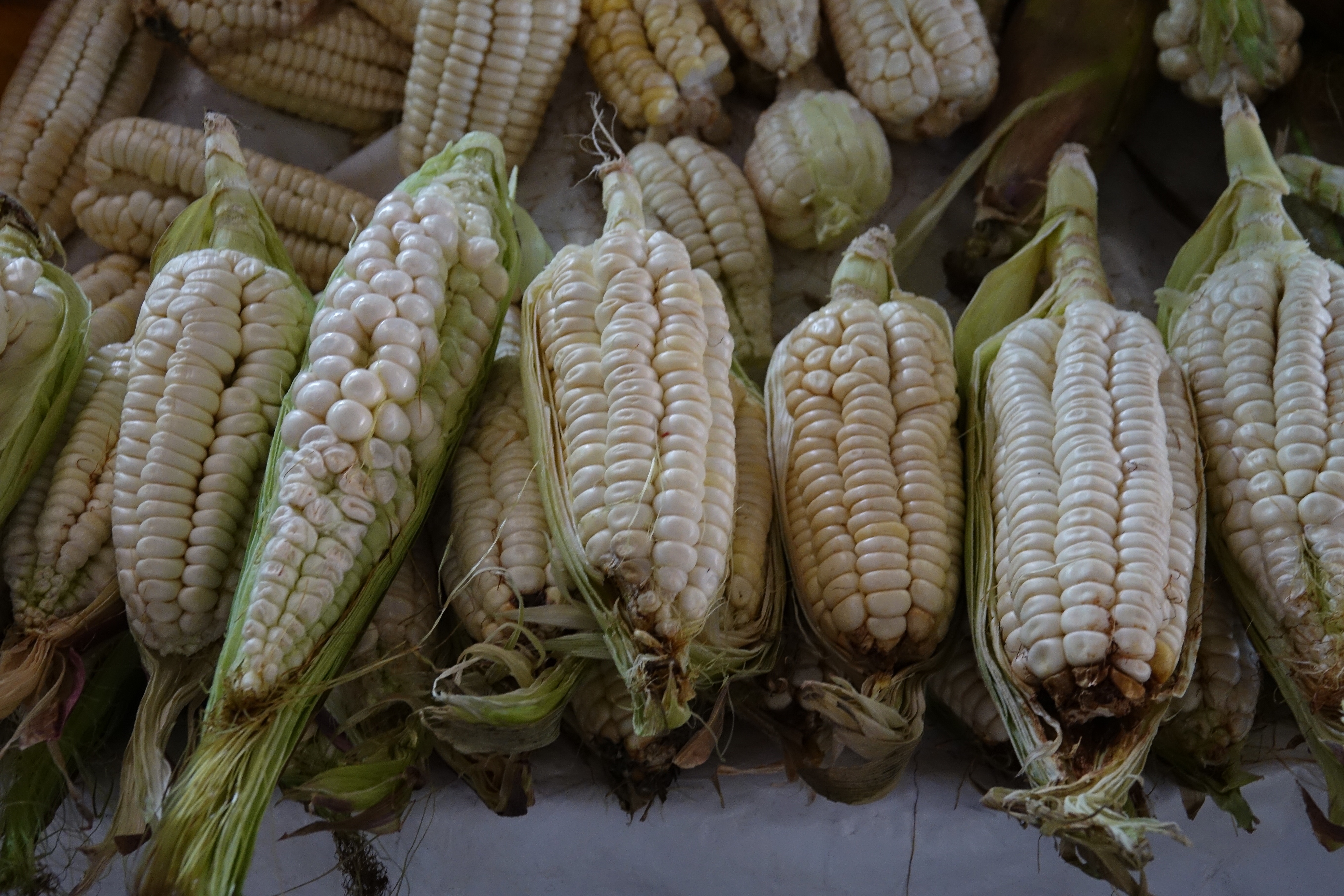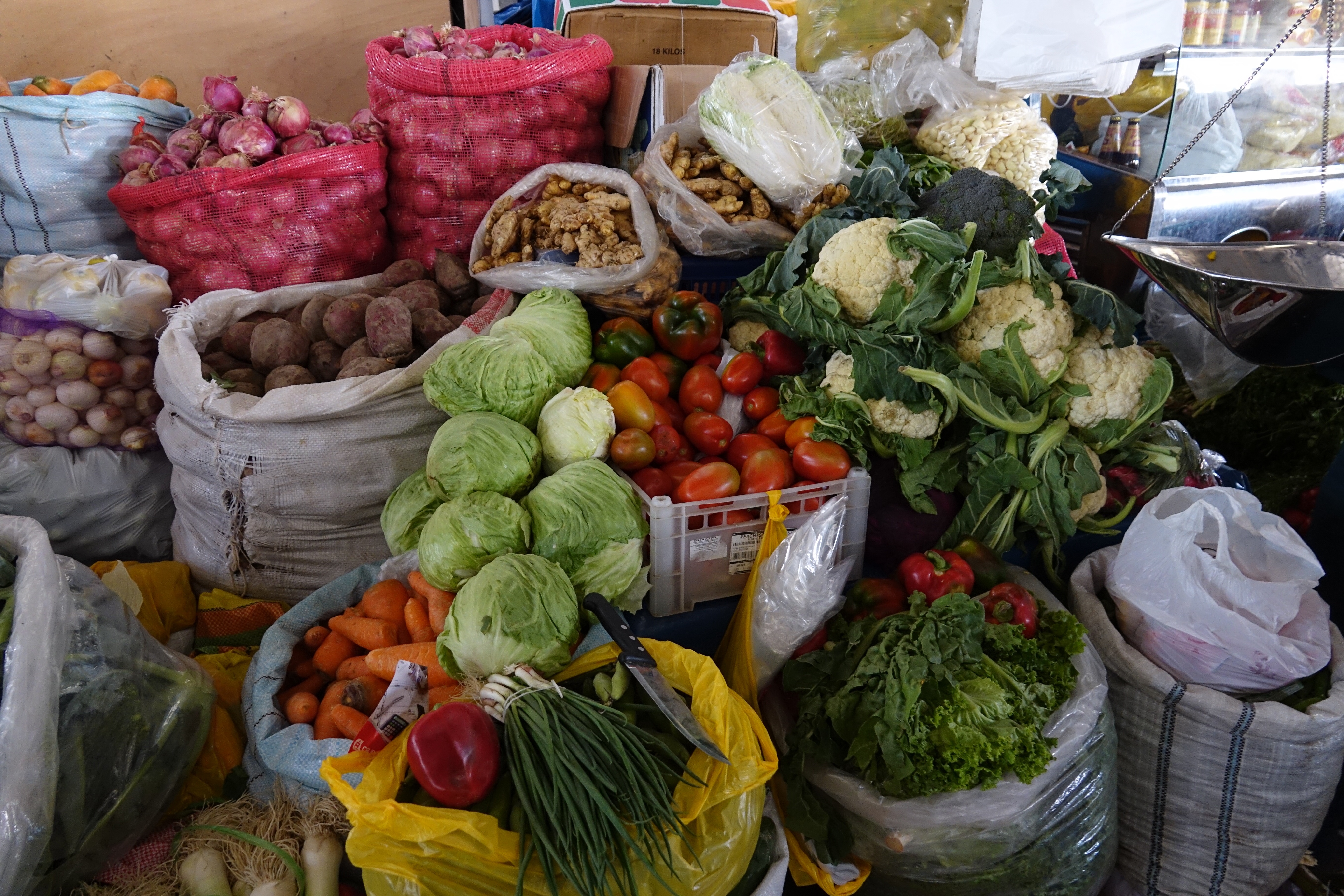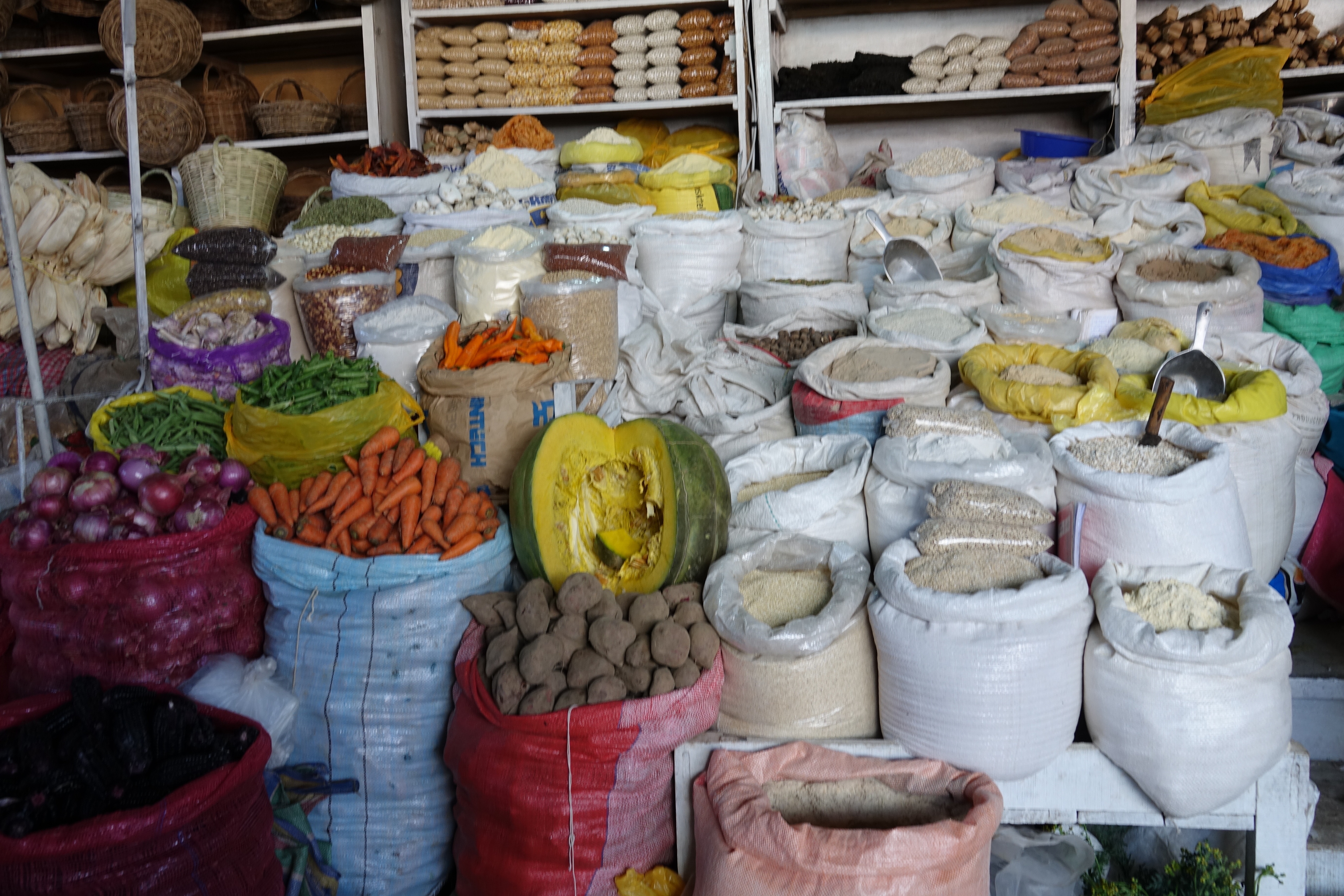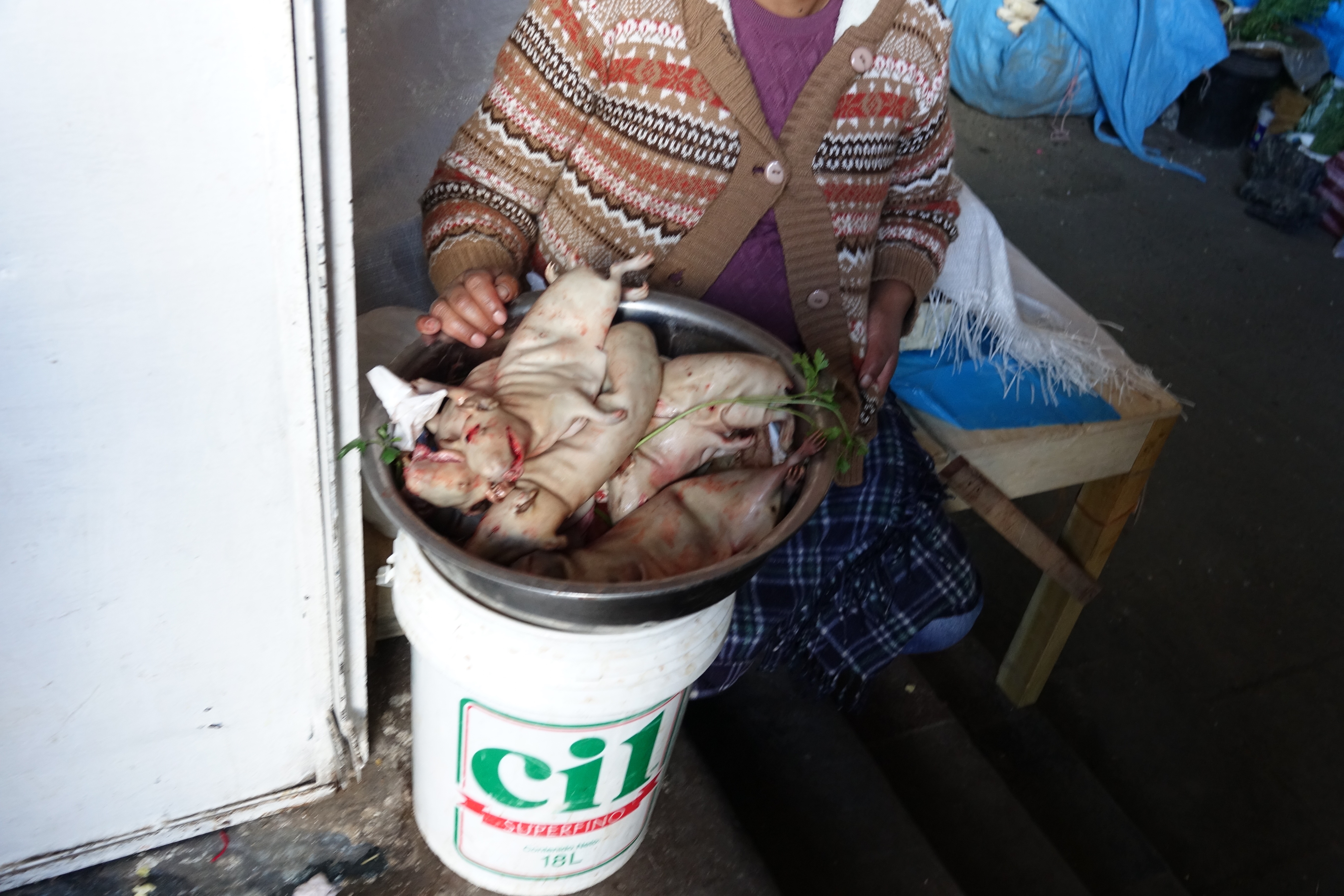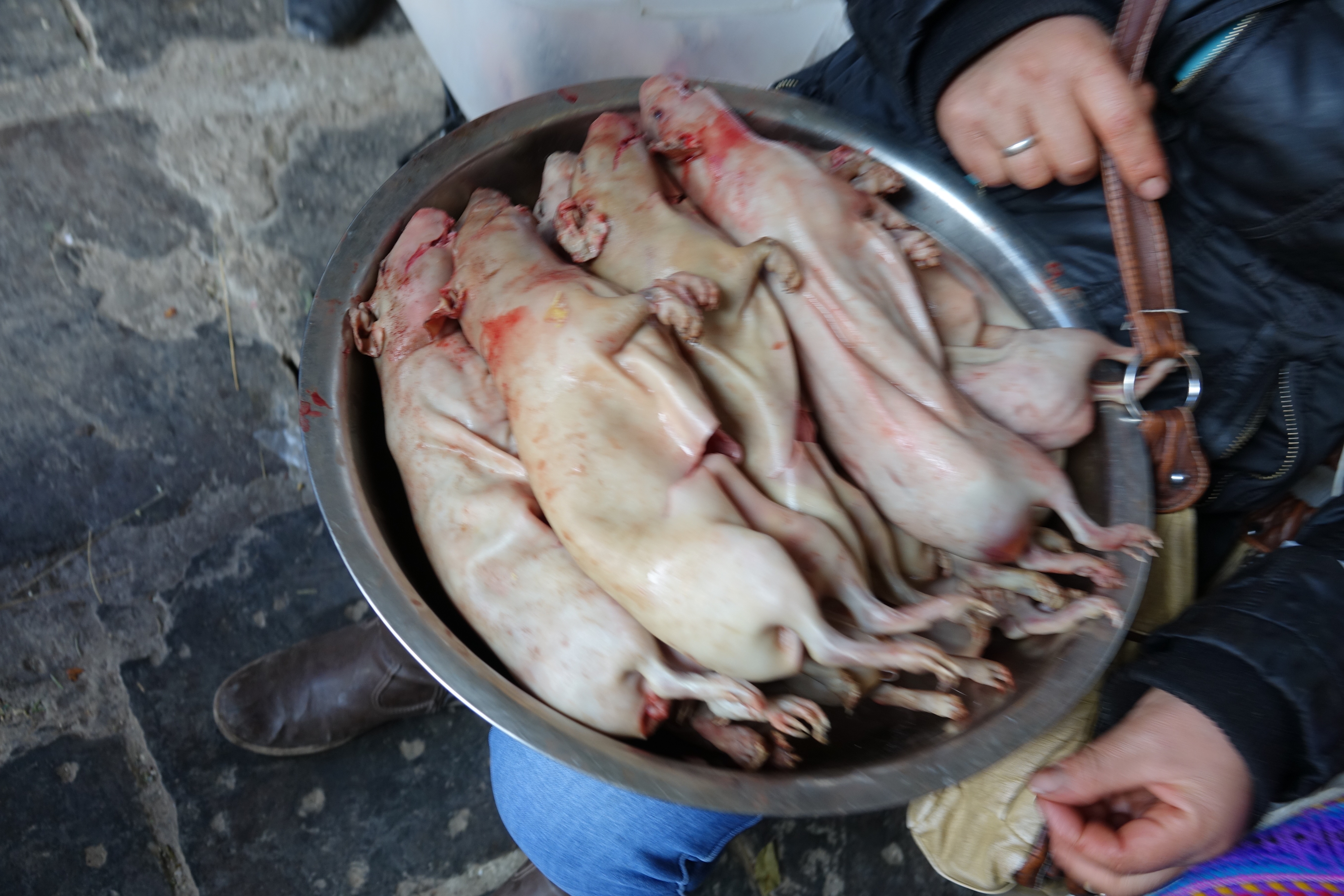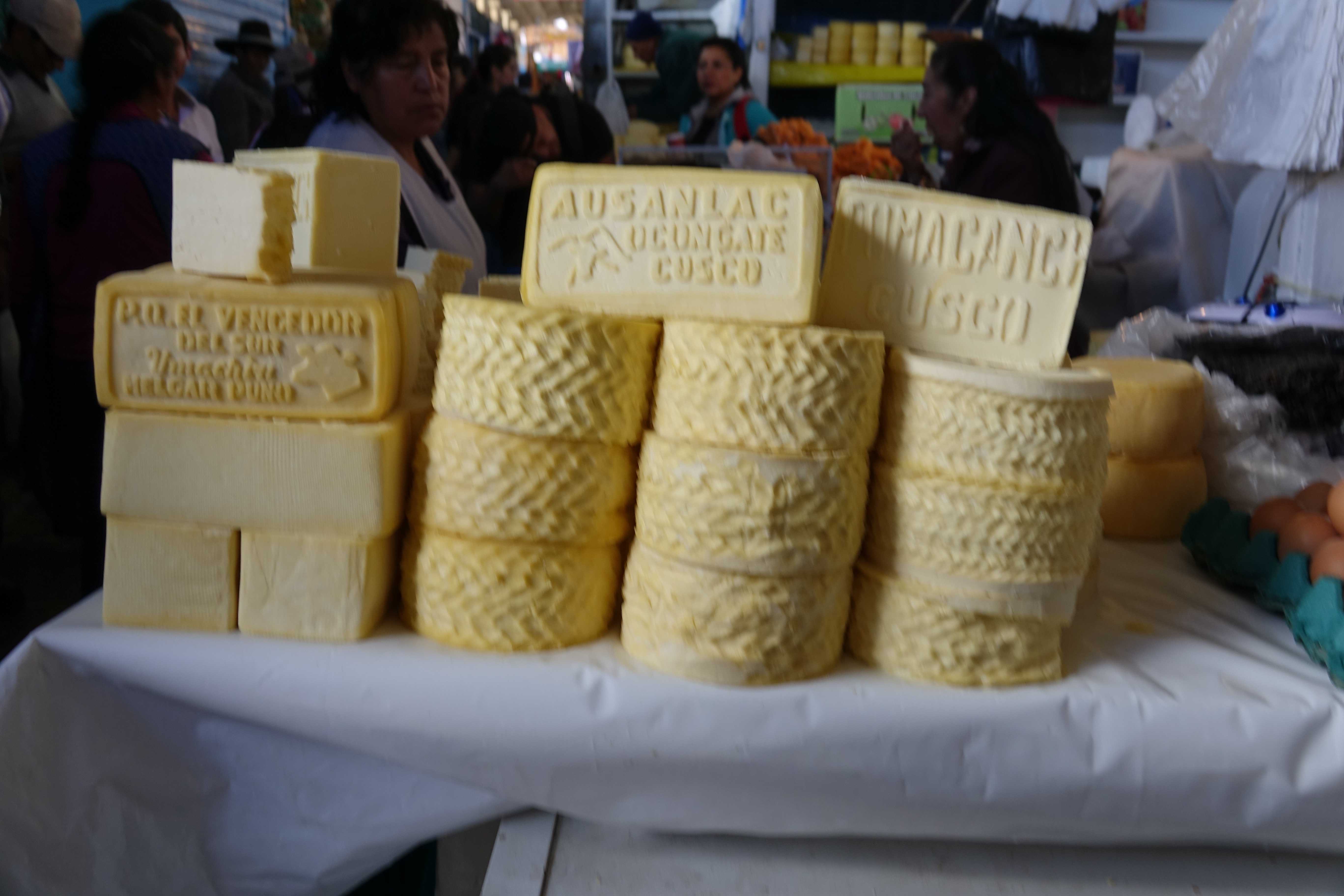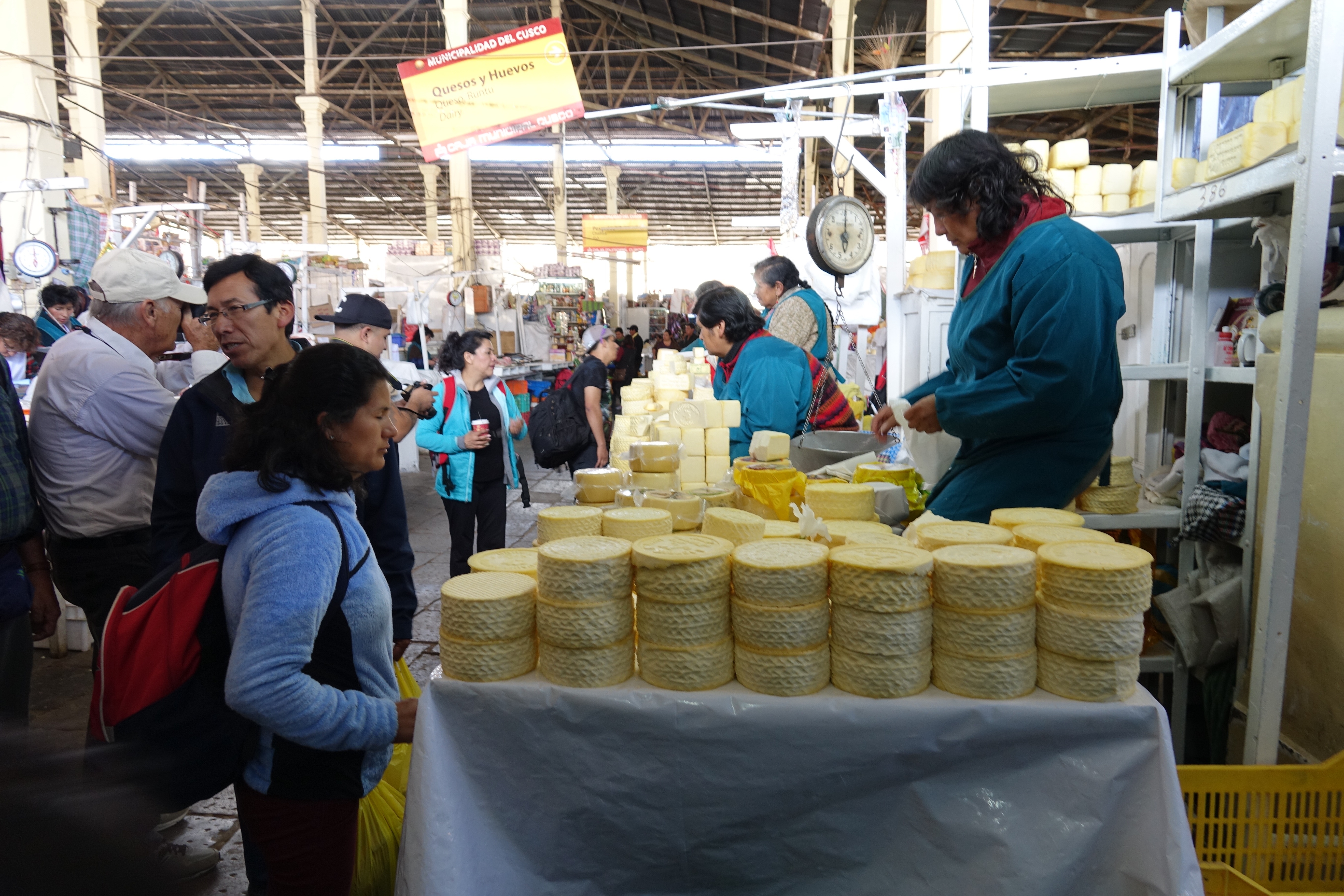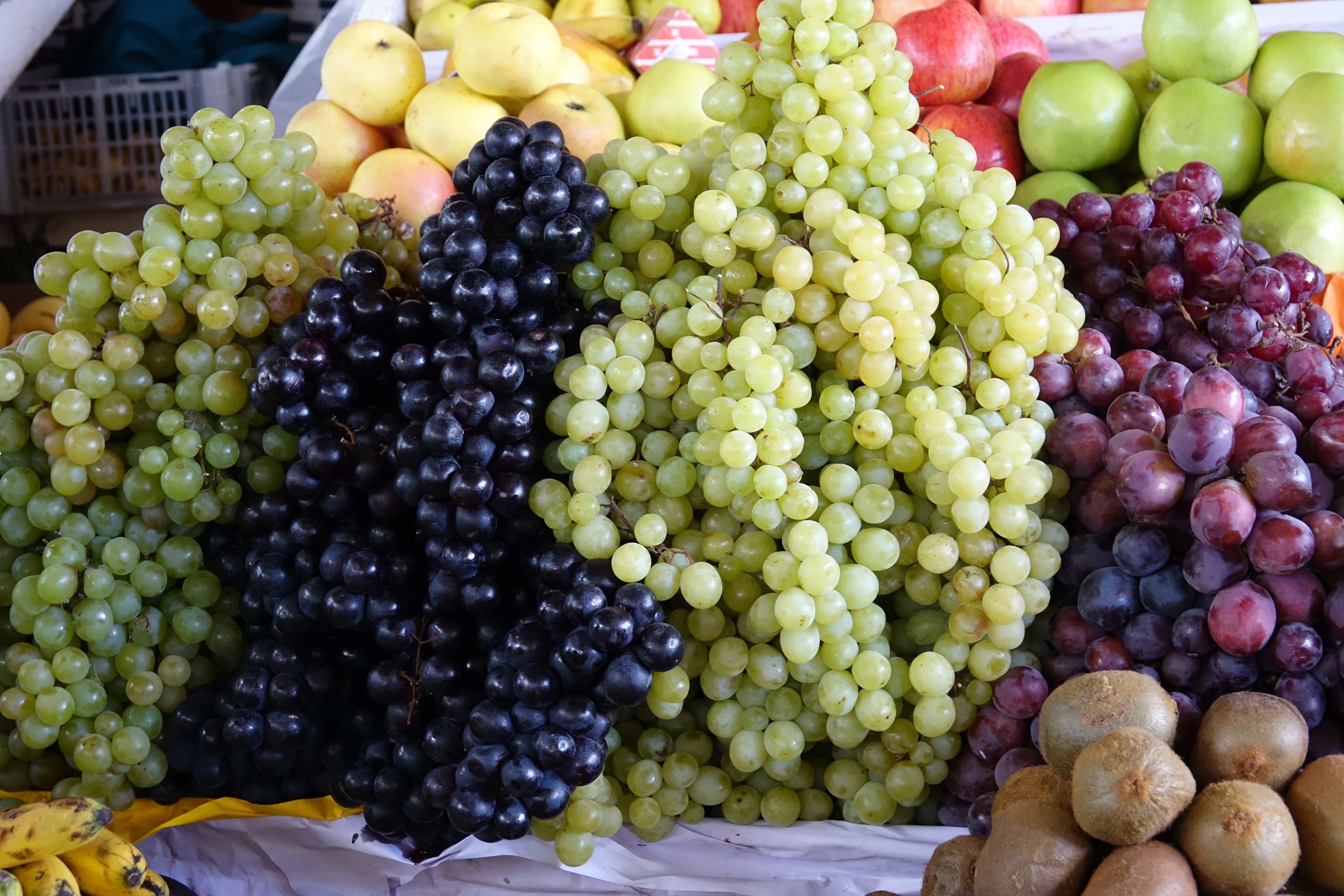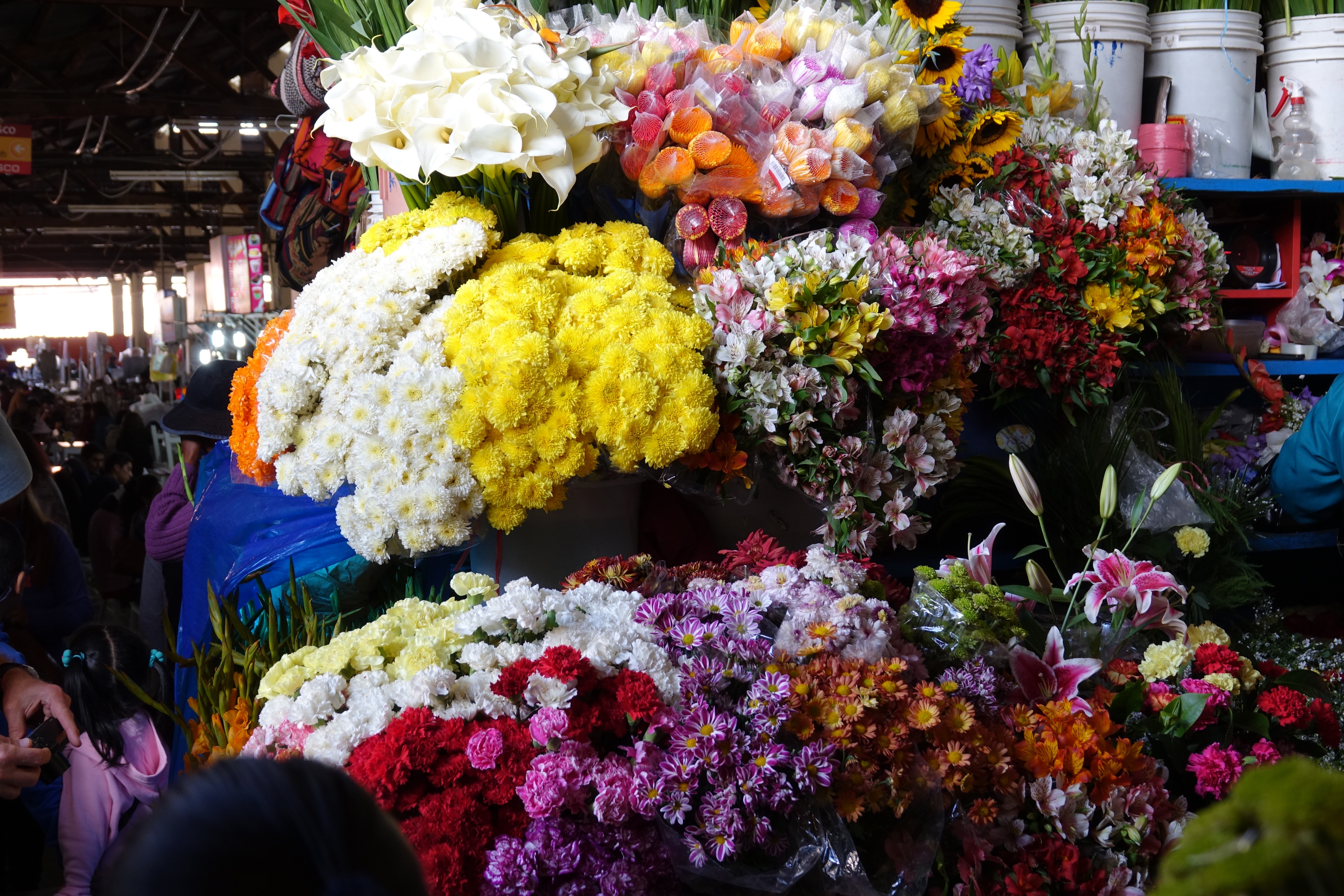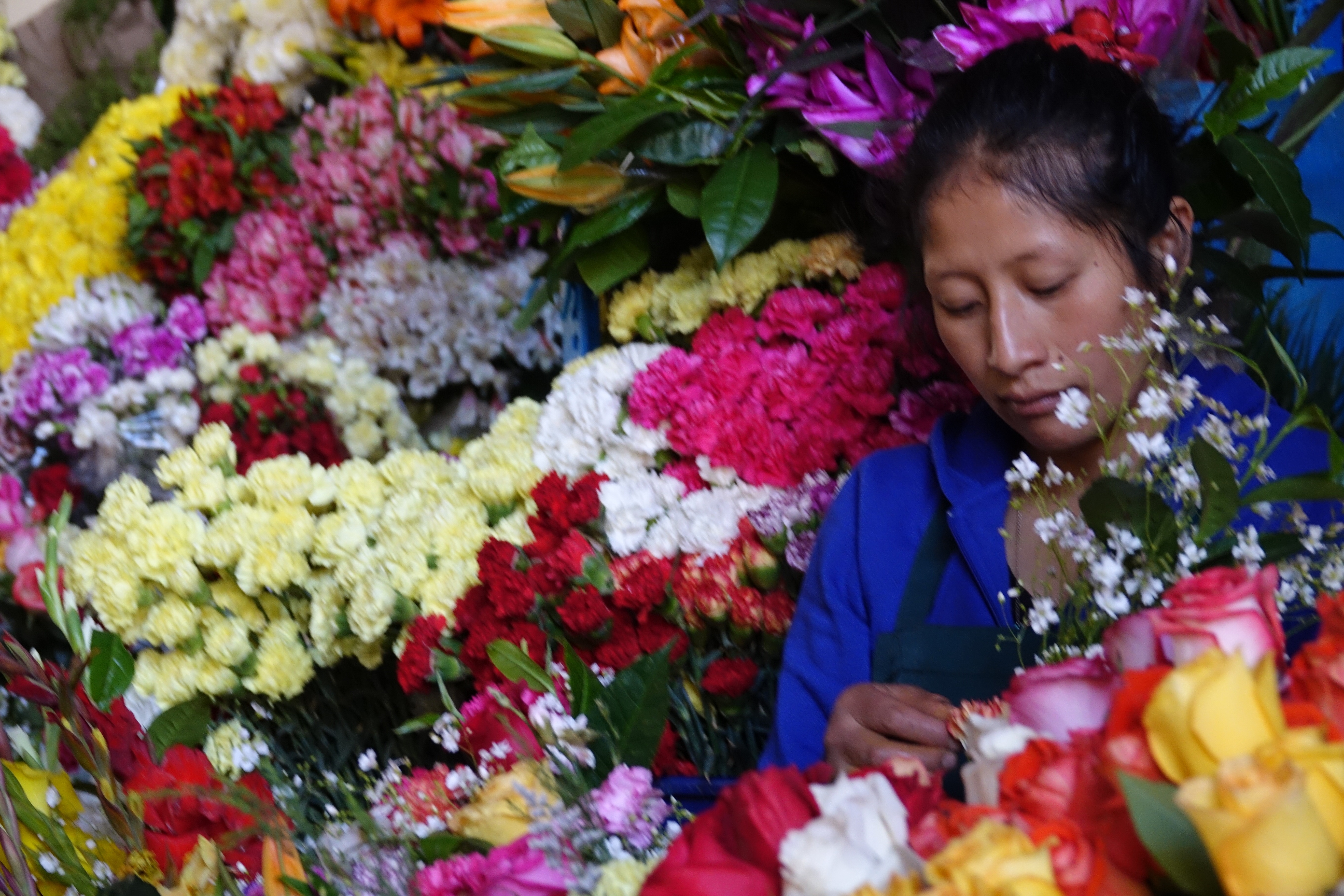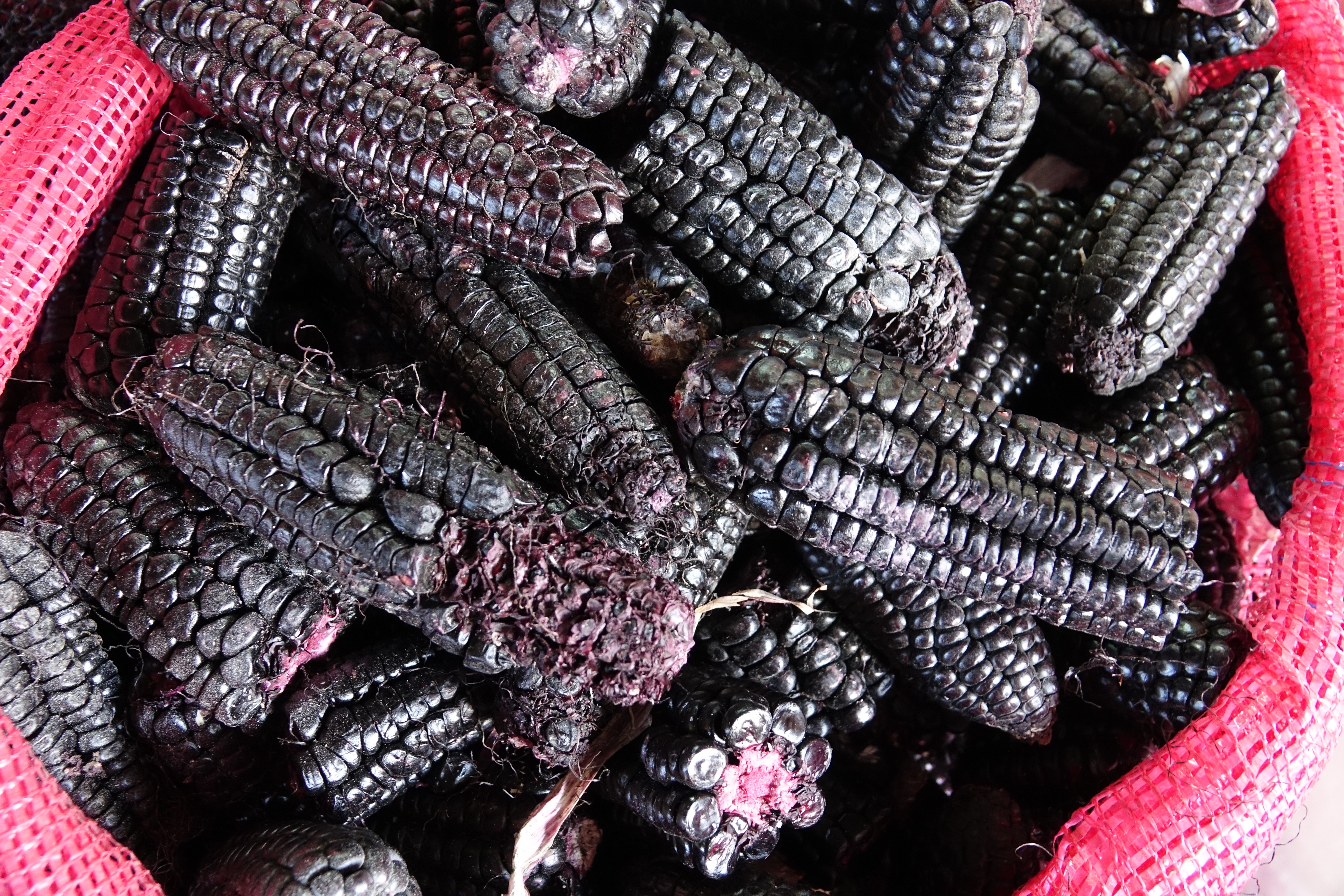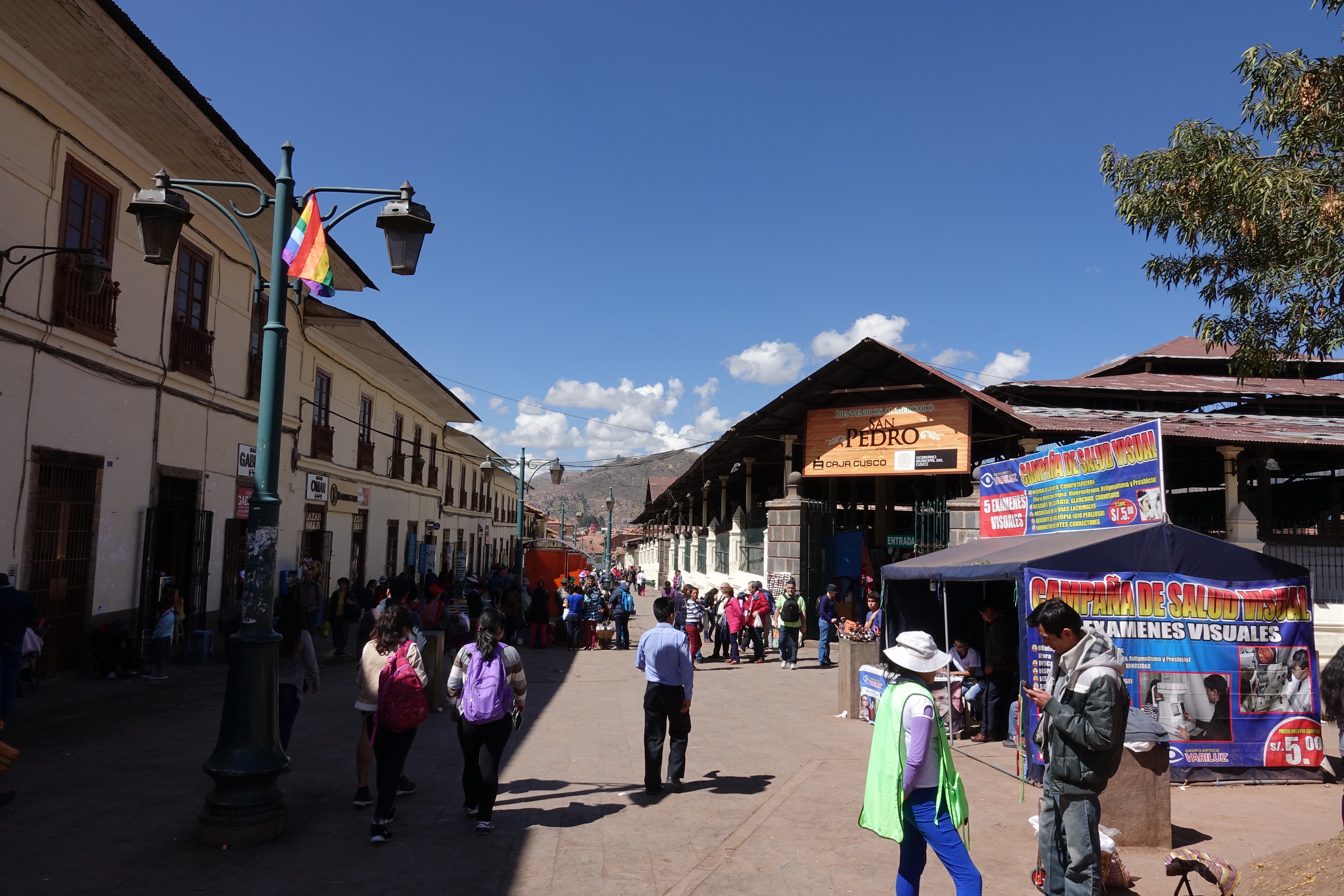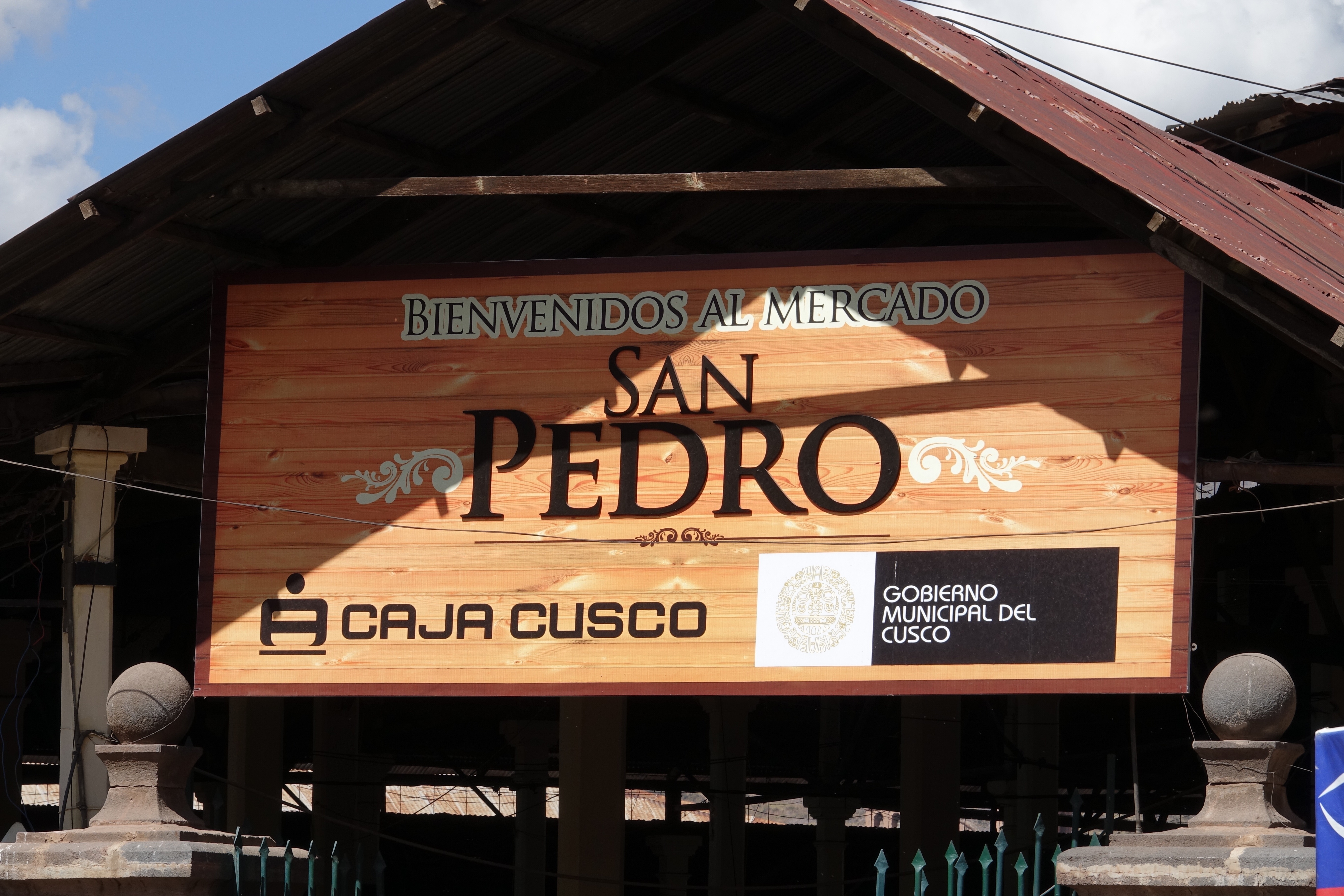The following posts cover our Peru and Amazon adventure with friends Bill Riat, Jim Simon, Jim Macklin, Dave Jordan, and Dick Alkire, from May 14 to 27, 2016.
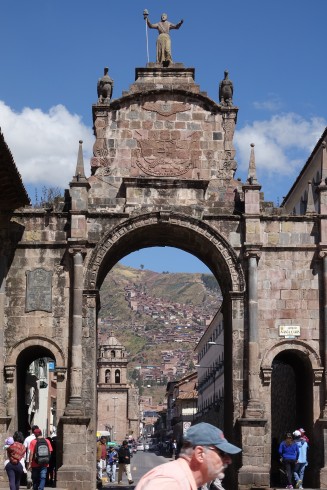
Arco Santa Clara, one of the four entrances to Cusco
Andean Explorer and Amazon Adventure 1
Blog Post 1
May 14 to 16, 2016
Saturday, May 14: Traveling to Peru today. Arrive in Cuzco tomorrow.
I was invited to travel to Peru by my friends, Bill Riat, and Jim Macklin – biking buddies with whom I ride my bike more than 100 miles to Portsmouth, Ohio each year.
We just completed this year’s ride last Saturday, May 7, 2016, and here we are off on the next adventure. We are joined on this trip by friends Dick Alkire, Dave Jordan, and Jim Simon.
It’s the Journey, Not the Destination
If it is true hat it is not the destination, it is the journey that counts, we were off to a good start! We arrived at Port Columbus airport at 4 PM for our 6 PM American Air flight to Miami where we would connect with our LAN flight to Lima, Peru at 12:44 AM. Unfortunately a baggage handler drove his cart into the airplane’s wing, and our plane was incapacitated. “Not to worry,” the agent said. “They are sending a plane from Chicago.”
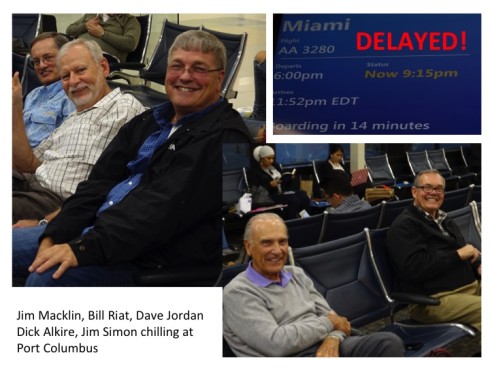
We went back to Eddie George’s to pass the time, because now our flight was expected to depart at 8:15 PM, if the plane from Chicago made it at the expected time. We rushed back to the gate at about 7:30, and discovered the plane had not even left Chicago yet!
We had a short discussion with our pilot (waiting for the same plane), who assured us that if we could take off no later than 9:30 we should still make our connection. Bill said, “If we give you $200, could you fly a little faster?” Of course, by now we were getting a little nervous, because missing our connection would mean waiting at least a day in Miami, if we could even get on another flight the next day.
Finally at 9:15 PM we boarded and took off exactly at 9:30. Of course we landed in terminal A, at 12:00 AM, the time the Lima flight started boarding, and the next flight departed out of terminal J which is in the next county. A gate attendant warned, “You must do a power walk. They won’t hold the flight for you!” We literally ran the one or two miles (only slight exaggeration!), and were the last to board our plane, which took off barely 10 minutes later.
After a very comfortable 5 1/2 hour flight during which we slept all of three hours, we landed in Lima where we cleared customs and immigration, collected our luggage and made our short 1hr 10 min flight to Cusco.
Cusco. Ancient City of the Incas
Day 1: Sunday, May 15 – Exploring Cusco
Our plane glided in over beautiful mountain tops and landed in the beautiful, ancient, sacred city of the Incas, nestled in the fertile valley surrounded by towering mountains.
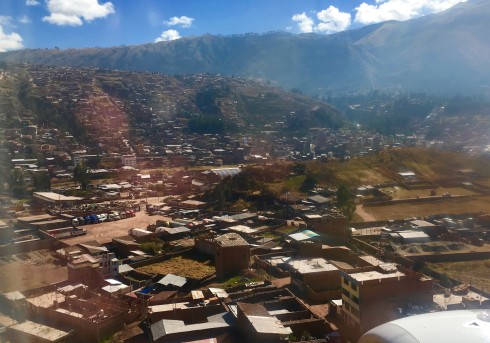
Arriving in the Sacred Valley of the Incas – landing in Cusco
The Sacred Valley of the Incas was undoubtedly a key area of settlement to the Incas. Its agreeable climate and fertile plains make a rare and fruitful combination for the high Andes. It was also the route to the jungle and therefore an area with access to the fruits and plants of the tropical lowlands. The Sacred Valley served as a buffer zone, protecting Cusco from incursions of the Antis, the fierce jungle tribes who from time to time raided the highlands. Today, the Sacred Valley remains a lush agricultural region supplying the city of Cusco with much of its produce such as maize, fruit and vegetables.Â
Cusco is a city in southeastern Peru, near the Urubamba Valley of the Andes mountain range. It is the capital of the Cusco Region as well as the Cusco Province. The city has a population of about 450,00. Located on the eastern end of the Knot of Cuzco, its elevation is around 3,400 m (11,200 ft).
The site was the historic capital of the Inca Empire from the 13th into the 16th century until the Spanish conquest. In 1983 Cusco was declared a World Heritage Site by UNESCO. It has become a major tourist destination, receiving nearly 2 million visitors a year. (https://en.wikipedia.org/wiki/Cusco)
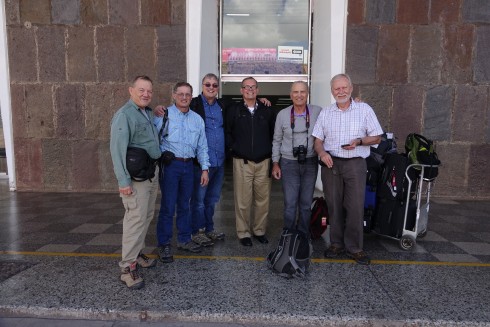
After flying all night we arrived in Cusco, ready for the adventure…
We were met by our guide, Thomas, from Sobek Mountain Travel, our outfitter. Thomas took us through the bustling streets of Cusco to our hotel, the Monasterio.
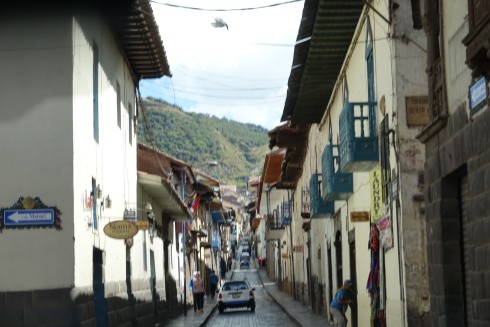
Cusco Street
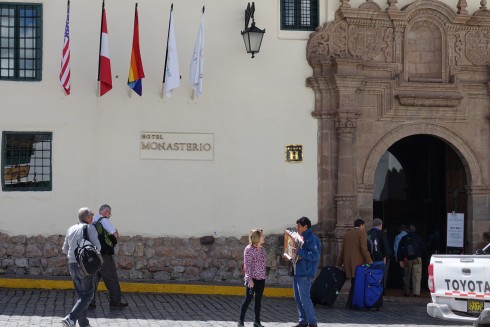
Arriving at the Hotel Monasterio
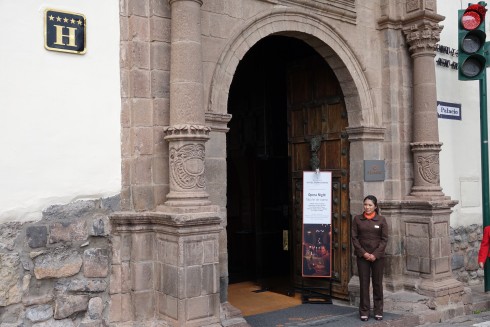
Front Entrance
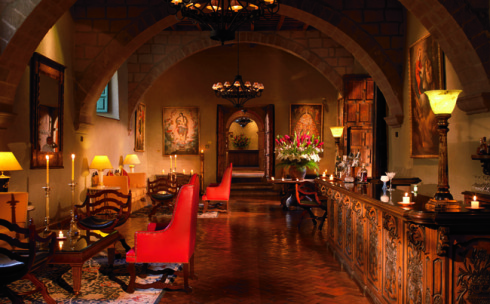
Reception Lobby
As its name implies, the hotel sits on the site of a Jesuit Monastery, built in 1595 to train catholic priests. Prior to this date it was the Palace of the Inca Amaru Qhala. Today, you won’t find any Incan remains in this property but you will find an exquisite example of colonial renaissance style architecture. The hotel is a world famous Cusco landmark, and within easy walking distance from many of the ancient buildings and other wonders this city offers.
After a quick rest and lunch were were met by Thomas who guided us to the significant places we needed to experience.
But first Bill had to take a few pictures of an Inca woman and her daughter in traditional dress. And of their Alpaca. We soon found out that there would be many more such opportunities for a few Sol (Sun) the local currency. (3 Sol is about $1.00)
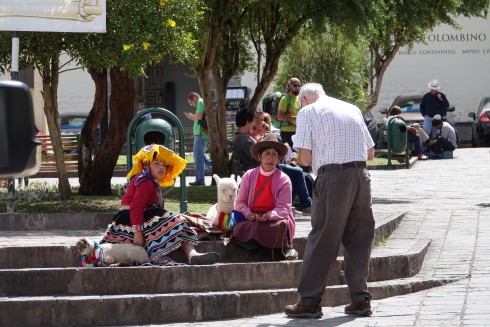
Bill taking a picture of a traditional Inca woman and her daughter in traditional dress, and their Alpaca
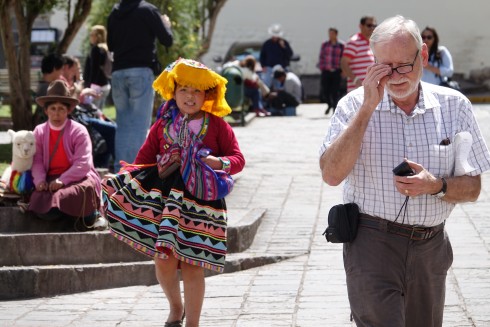
…maybe he didn’t pay enough?
Plaza de Armas
We moved on to the main city square, Plaza de Armas. Known as the “Square of the warrior” in the Inca era, this plaza has been the scene of several important events in the history of this city, such as the proclamation by Francisco Pizarro in the conquest of Cuzco.
The Spanish built stone arcades around the plaza which endure to this day. The main cathedral and the Church of La CompañÃa both open directly onto the plaza.
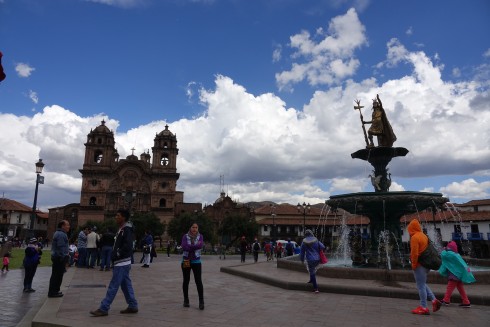
Plaza de Armas with the Church of La Campañia on the left and the statue of the Warrior King on the right

Plaza de Armas with Cusco Catedral to the left, the Church of La CompañÃa to the right
Ancient Inca Stonework
We moved on to explore the narrow alleys and streets of Cusco where we found excellent representations of the famous Inca stonework. Using only stone tools and no cement or mortar, these precisely carved stones stand today as a monument to the craftsmanship of these ancients.
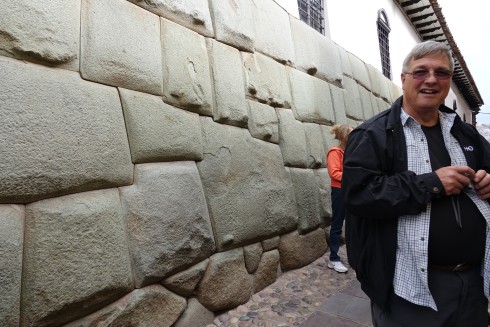
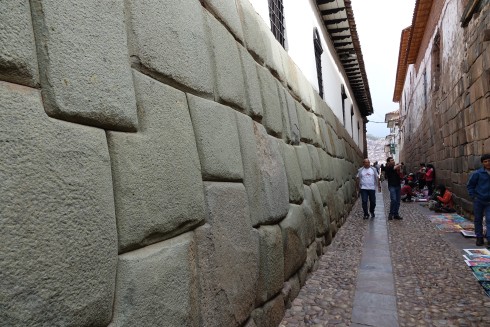
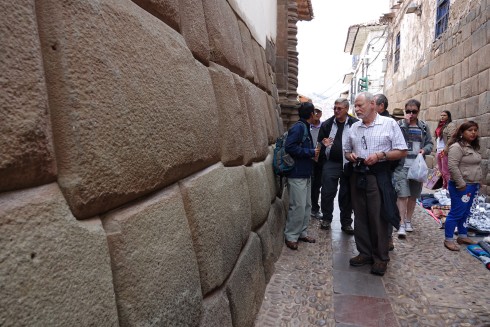
 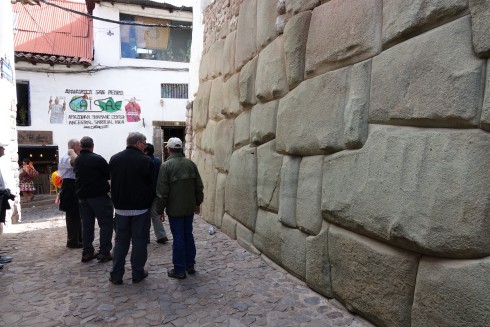
An of course we once again admired the beautiful colorful clothes of the traditional Inca people.

Qurikancha and Convent of Santo Domingo
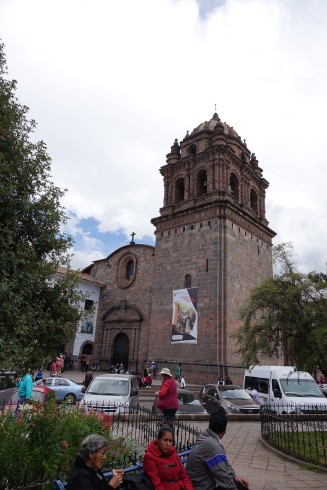
The Convent of Santa Domingo
The Qurikancha (“golden place”) was the most important sanctuary dedicated to the Sun God at the time of the Inca Empire. According to ancient chronicles Qurikancha was said to have featured a large solid golden disc that was studded with precious stones and represented the Inca Sun God – Inti.
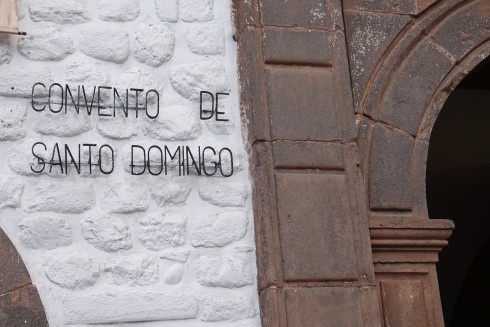
Spanish chroniclers describe the Sacred Garden in front of the temple as a garden of golden plants with leaves of beaten gold, stems of silver, solid gold corn-cobs and 20 life-size llamas and their herders all in solid gold.
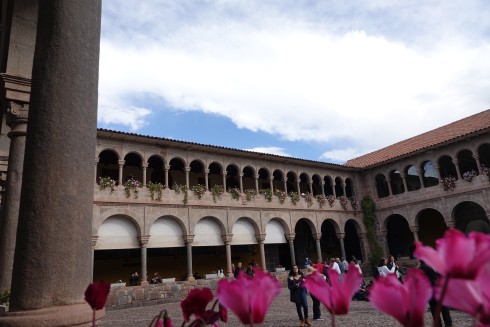
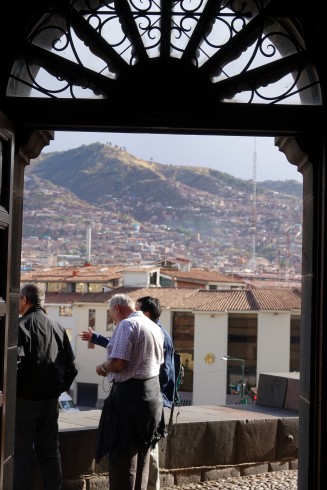
The temple was destroyed by its Spanish invaders who, as they plundered, were determined to rid the city of its wealth, idolaters and shrine. Nowadays, only a curved outer wall and partial ruins of the inner temple remain at the site.
With this structure as a foundation, colonists built the Convent of Santo Domingo in the Renaissance style. The building, with one baroque tower, exceeds the height of many other buildings in this city.
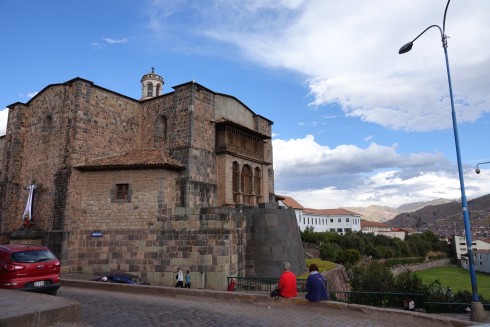
The only remnant of the original Temple of the Sun is the curved outer wall to the right of the Convent of Santa Domingo
We left to go play with some Alpacas..
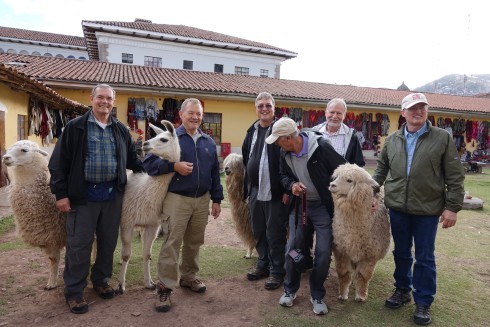
Cusco Cathedral
Back at the Plaza de Armas our last exploration for the day was the Cusco Cathedral. Simply called Catedral, the main basilica cathedral of the city was built between 1560 and 1664. Stone was used as the main material, which was extracted from nearby quarries, although some blocks of red granite were taken from the fortress of Saksaywaman outside Cusco.
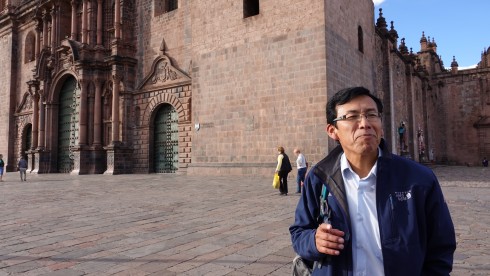
Our guide, Thomas, explaining the history of the Cusco Cathedral
This great cathedral presents late-Gothic, Baroque, and plateresque interiors and has one of the most outstanding examples of colonial goldwork. Its carved wooden altars are also important.
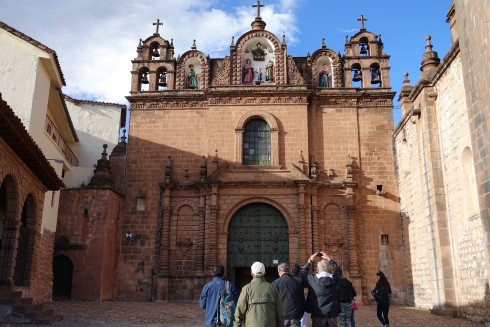
We entered this sanctuary and were blown away by the beauty and the wealth represented here. Thomas explained that most Peruvians practice a combination of the Catholic faith and traditional Inca religion.
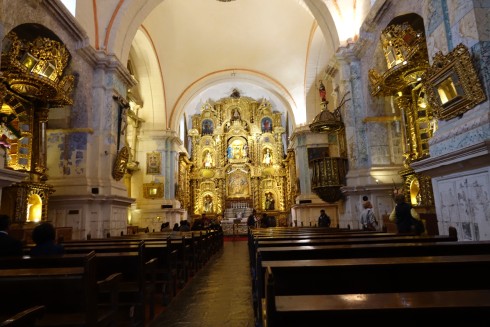
Dinner and Rest
We spent a long time in Catedral, and when we emerged it was dark.  We were exhausted from more than two days’ travel and exploration of a most amazing city as we admired the beautiful Plaza de Armas after dark.
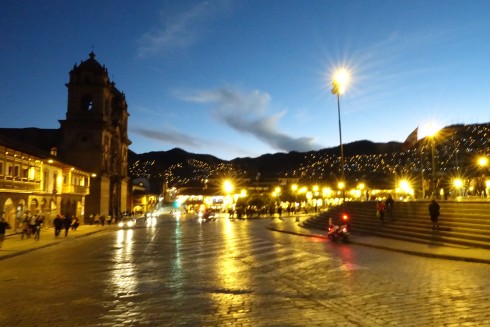
Plaza de Armes at night
We enjoyed a lovely dinner…
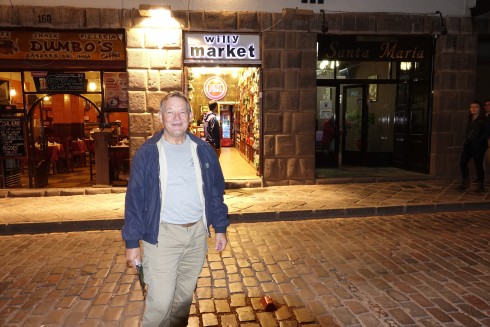
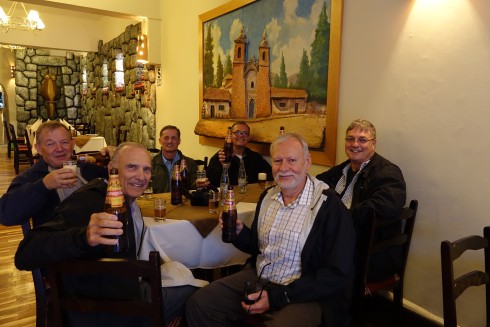
…and arrived at our hotel exhausted. I am sure everyone was in bed by 9 PM!
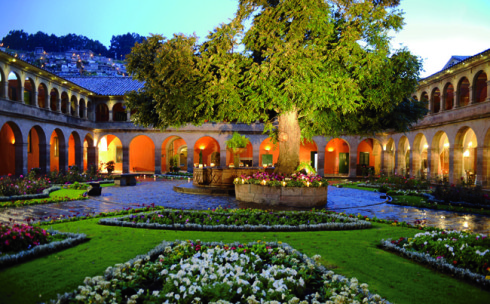
Hotel Monasterio Main Courtyard Gardens at night
Monday, May 16: Day 2 – Exploring Cusco
After a lovely breakfast we set of to explore the rest of the city. We walked through the Plaza de Armas, and once again enjoyed the spectacular Iglesia de la CompañÃa de Jesús (Church of the Society of Jesus.) This church, whose construction was initiated by the Jesuits in 1576 on the foundations of the Amarucancha or the palace of the Inca ruler Wayna Qhapaq, is considered one of the best examples of colonial baroque style in the Americas. Its façade is carved in stone and its main altar is made of carved wood covered with gold leaf. It was built over an underground chapel and has a valuable collection of colonial paintings of the Cusco School.
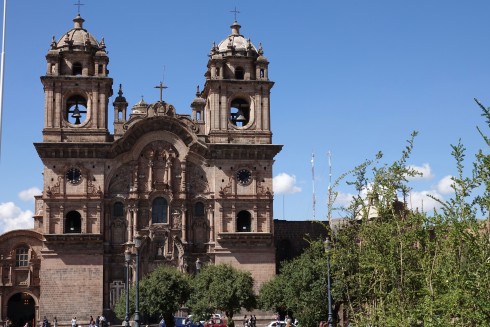
Iglesia de la CompañÃa de Jesús
A wonderful bonus: we were entertained by a group of 5 or six-year-old kids practicing for an important festival coming up in Cusco in a couple of weeks. Too cute! Click on the photo below or on the link for a 30 second video. (Kids dancing in Plaza de Armas)
![]() Kids dancing in Plaza de Armas
Kids dancing in Plaza de Armas
Next we walked through the Arch of Santa Clara, one of the four gates into the city…
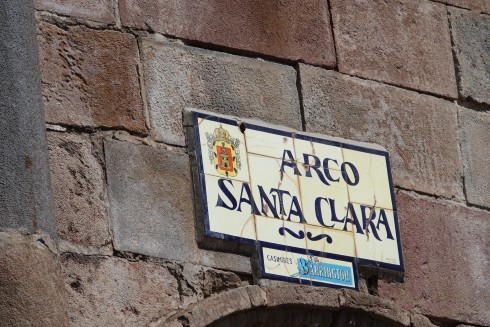

…and ended up spending a delightful few hours in the local market, Mercado San Pedro.
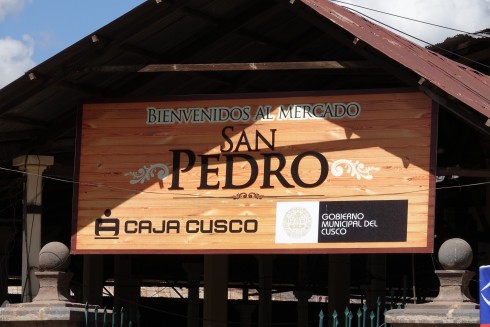
Here is a slide show of our market visit
The slideshow will play automatically, displaying each slide for about 5 seconds…
We finished the day with a visit to the Inka Museum
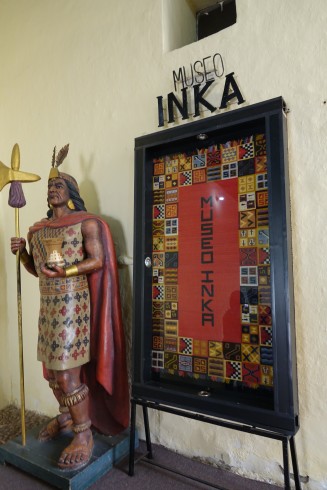
Museo Inka is a state owned museum run and managed by Cusco’s San Antonio Abad University. Located just off the Plaza de Armas to Plazoleta Nazarenas, the museum is set in a huge colonial mansion. There were about 24 exhibition rooms to view, each dedicated to different periods of the Inca and Spanish history of Peru. Overall, I was disappointed with the layout of the museum. There seemed to be only a limited amount of information (even in Spanish) about the items exhibited, or even what they were.
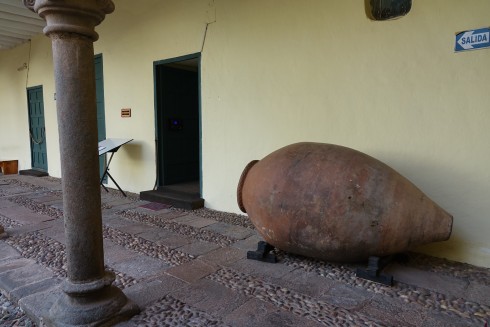
Nevertheless, it was a good way to explore and view some of the history and some of the items we read about in the book Last Days of the Incas.
We retired to our hotel, tired and ready for a lovley meal at a local restaurant.
May 17 to 19: Exploring
Day 3, 4 , and 5 to follow – amazing treks, and totally impressive Inca ruins.
Please see Blog Post 2
Saqsaywaman, ancient Inca temple and fortress
Q’enqo, Sacred ancient ritual bathing
The village of Ccorao
And the famous Pisaq – our first serious trek: to the ancient terraces and mountaintop Inca ruins.

